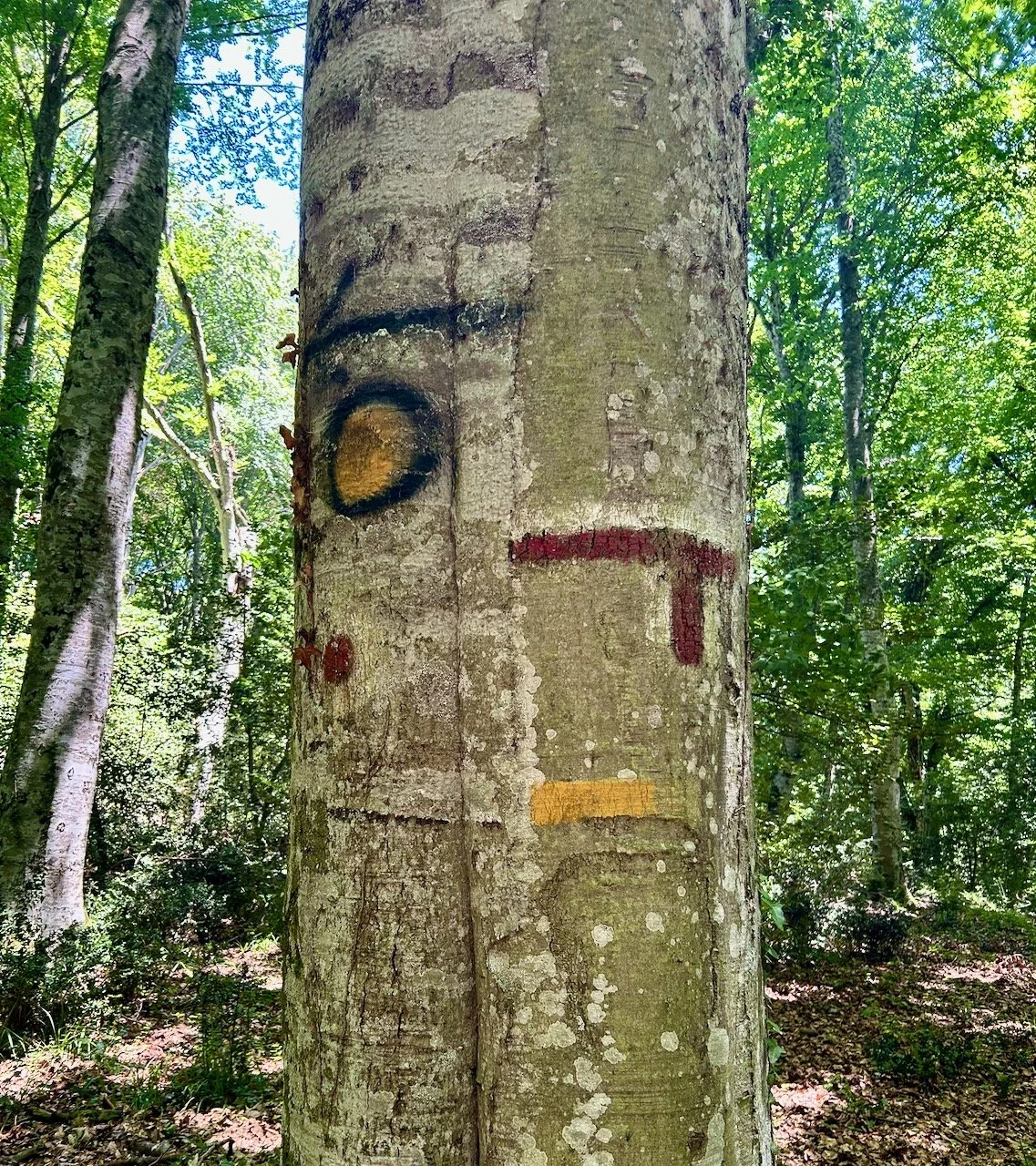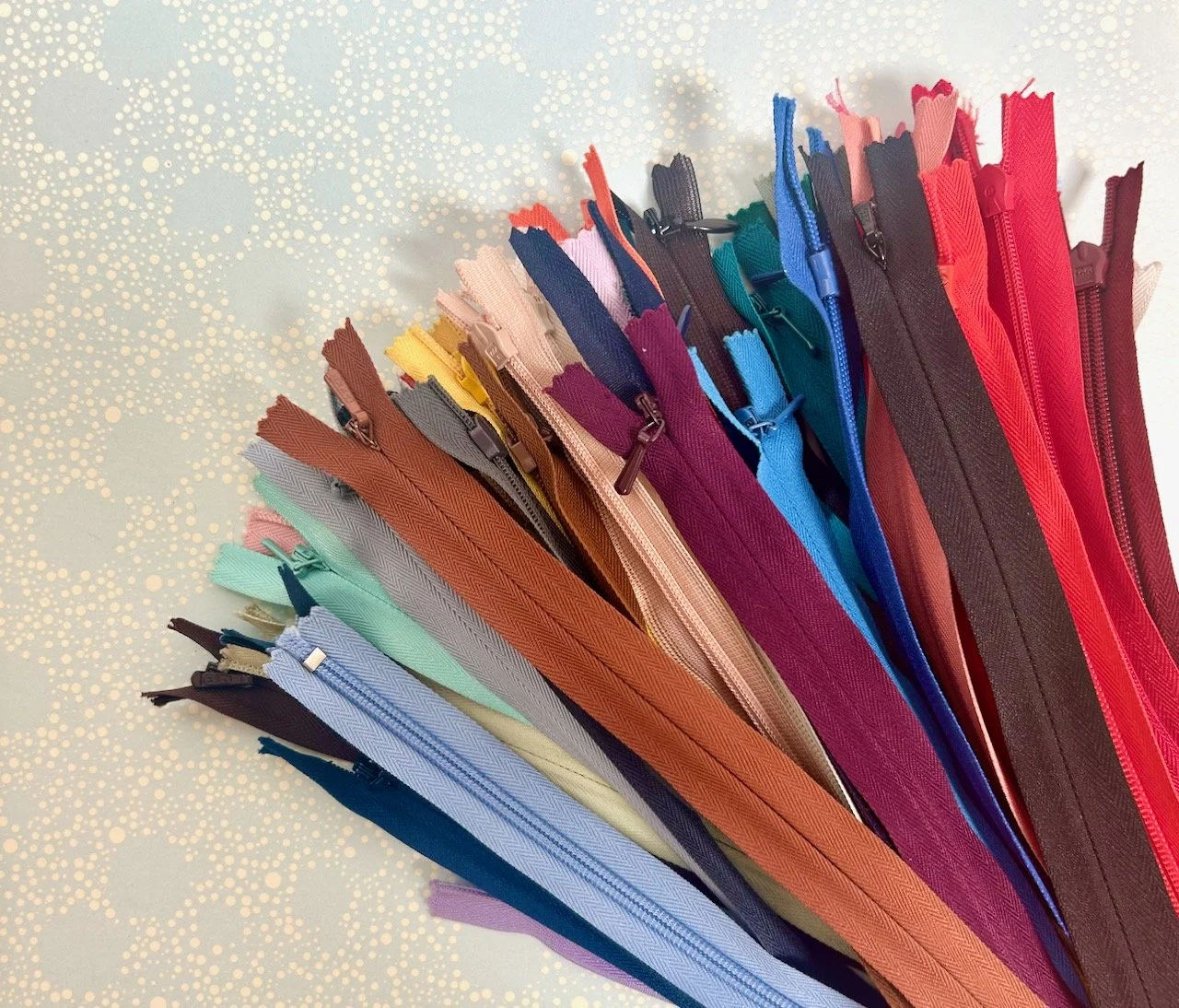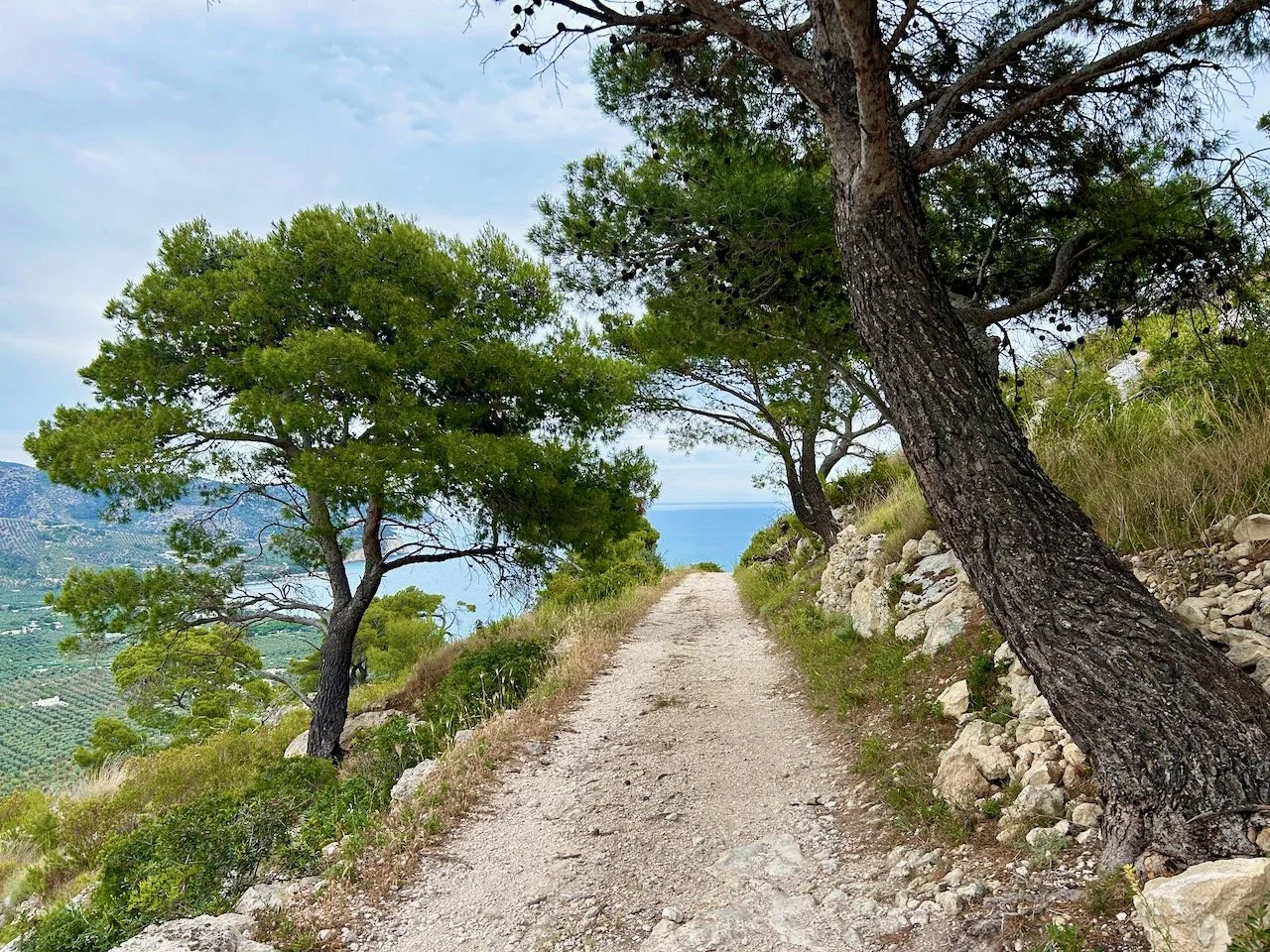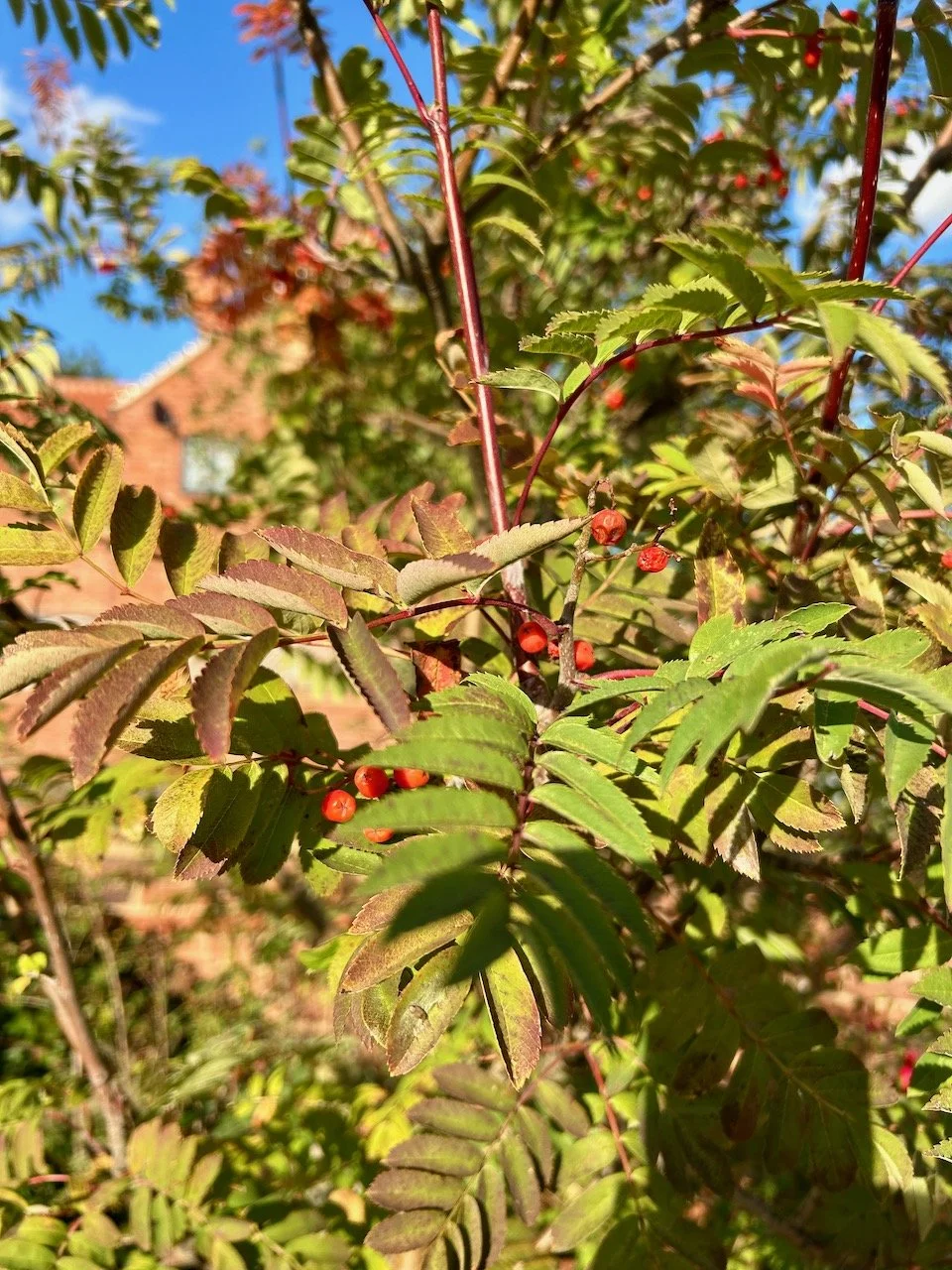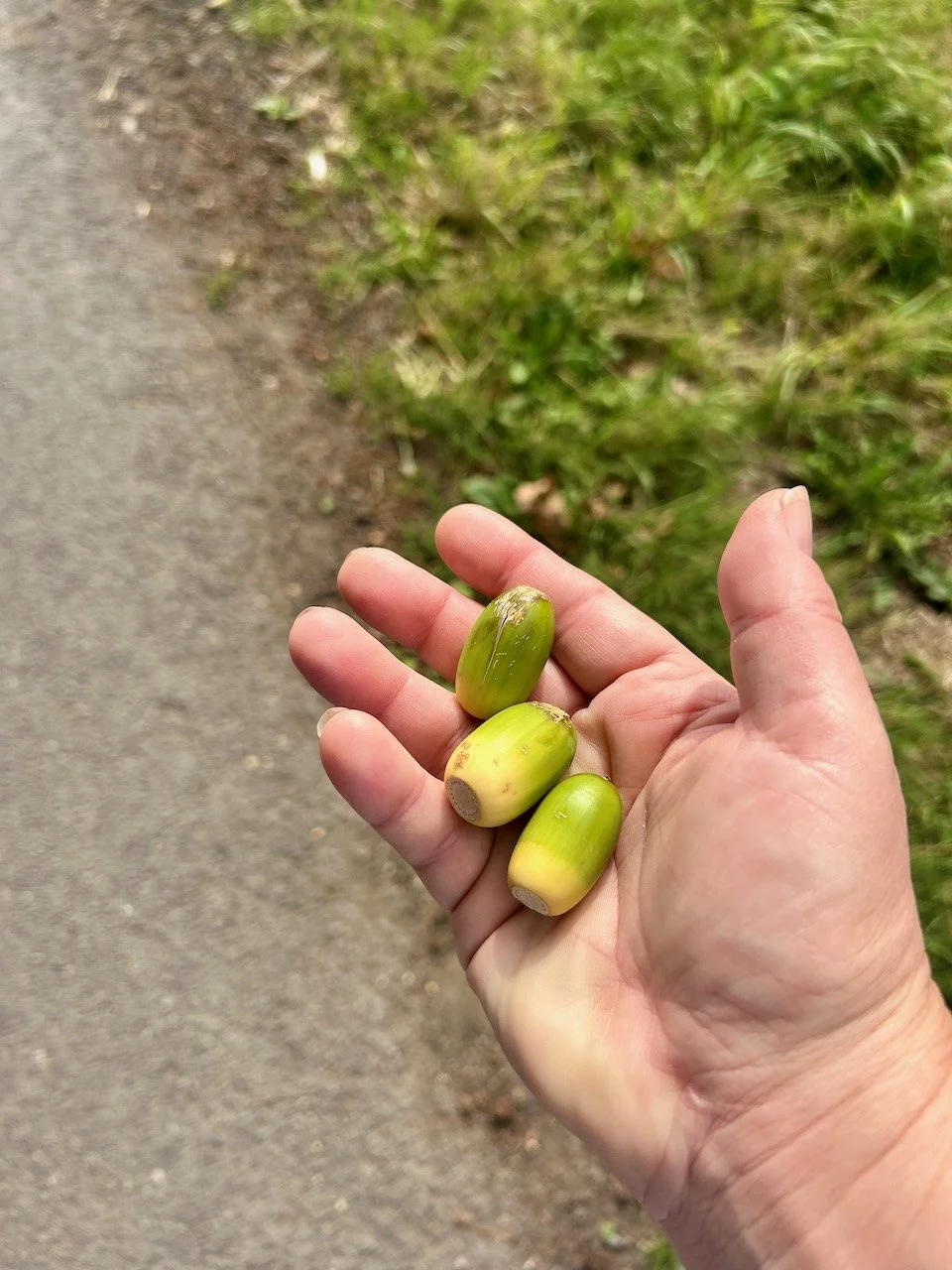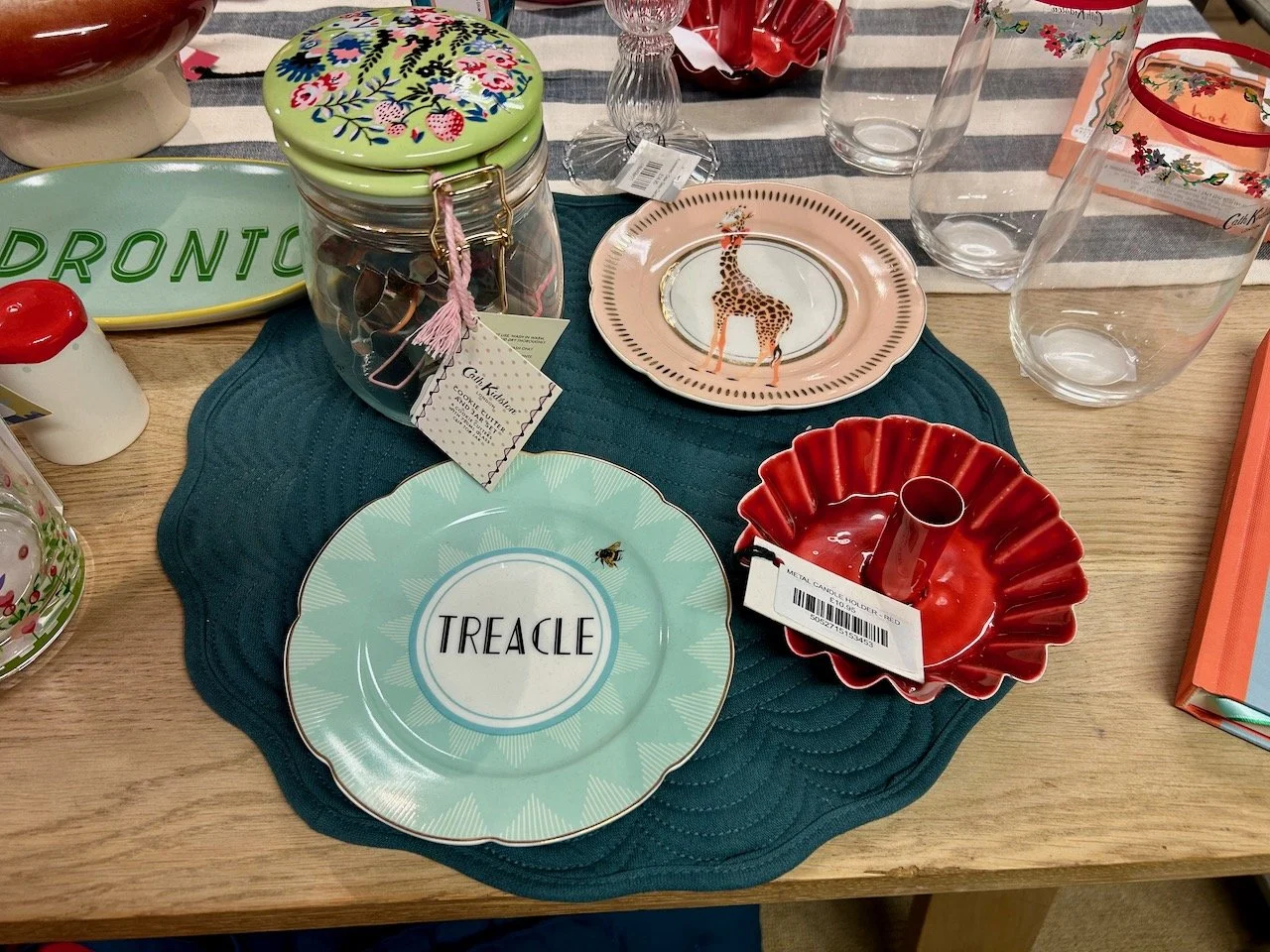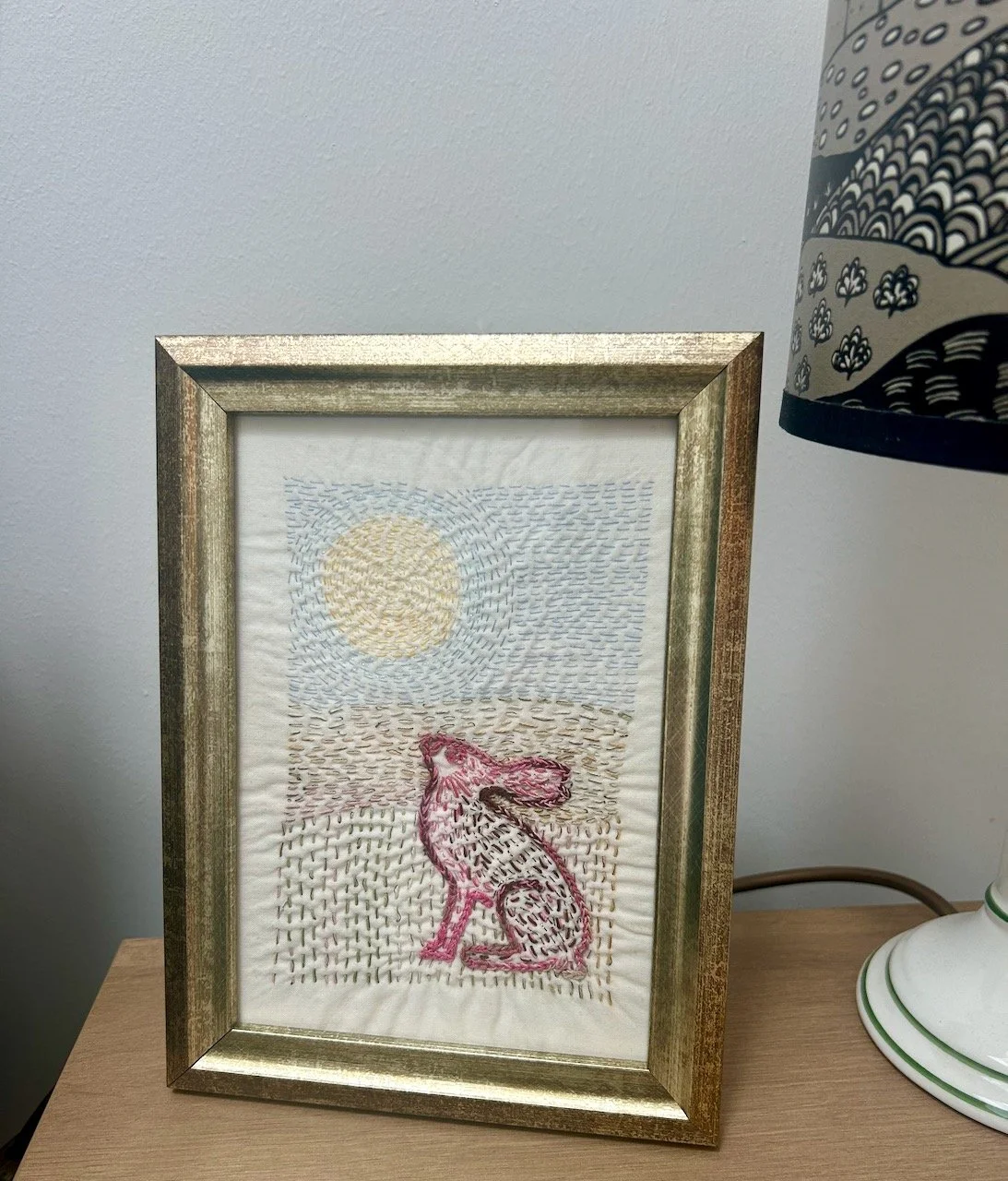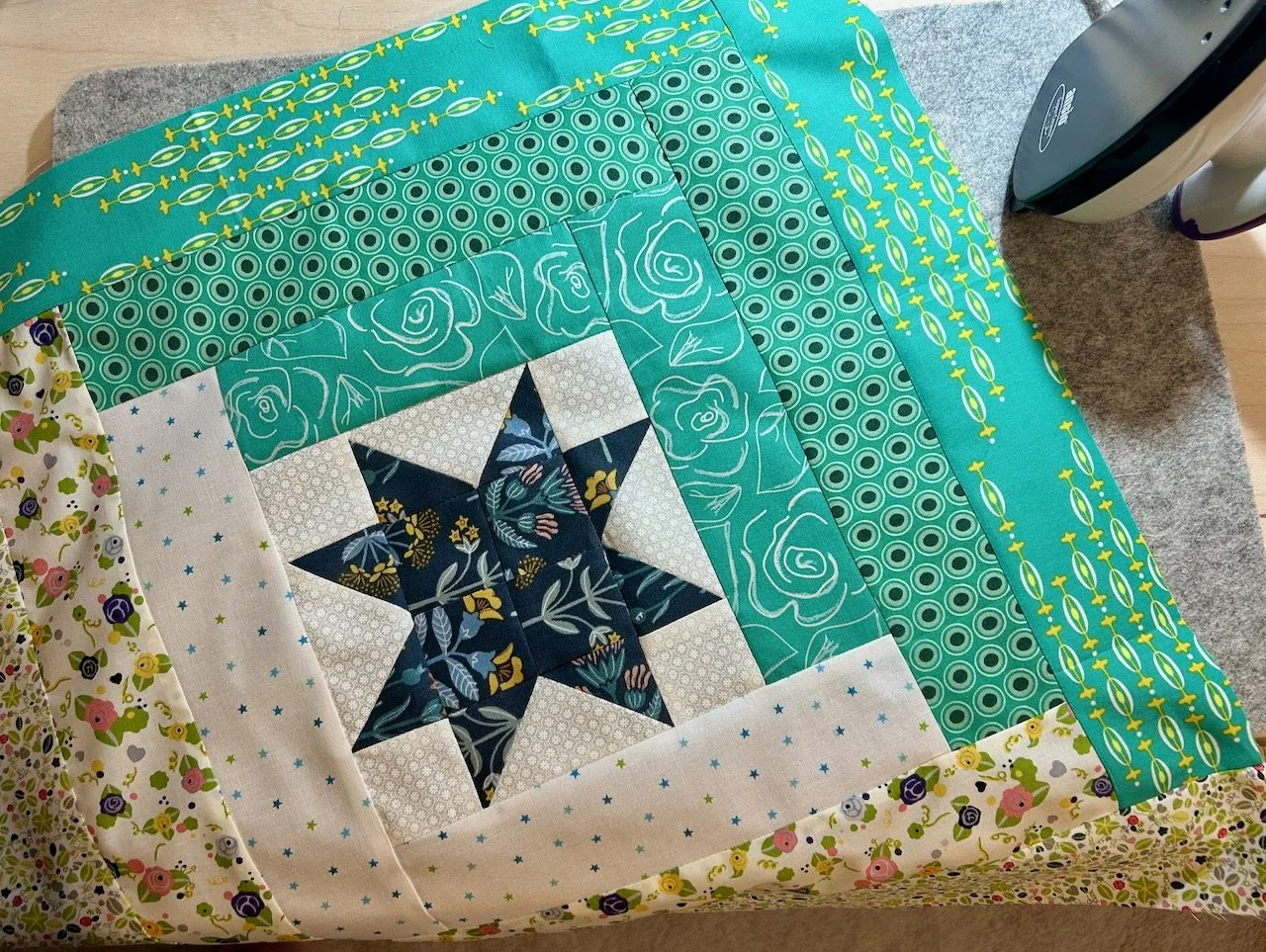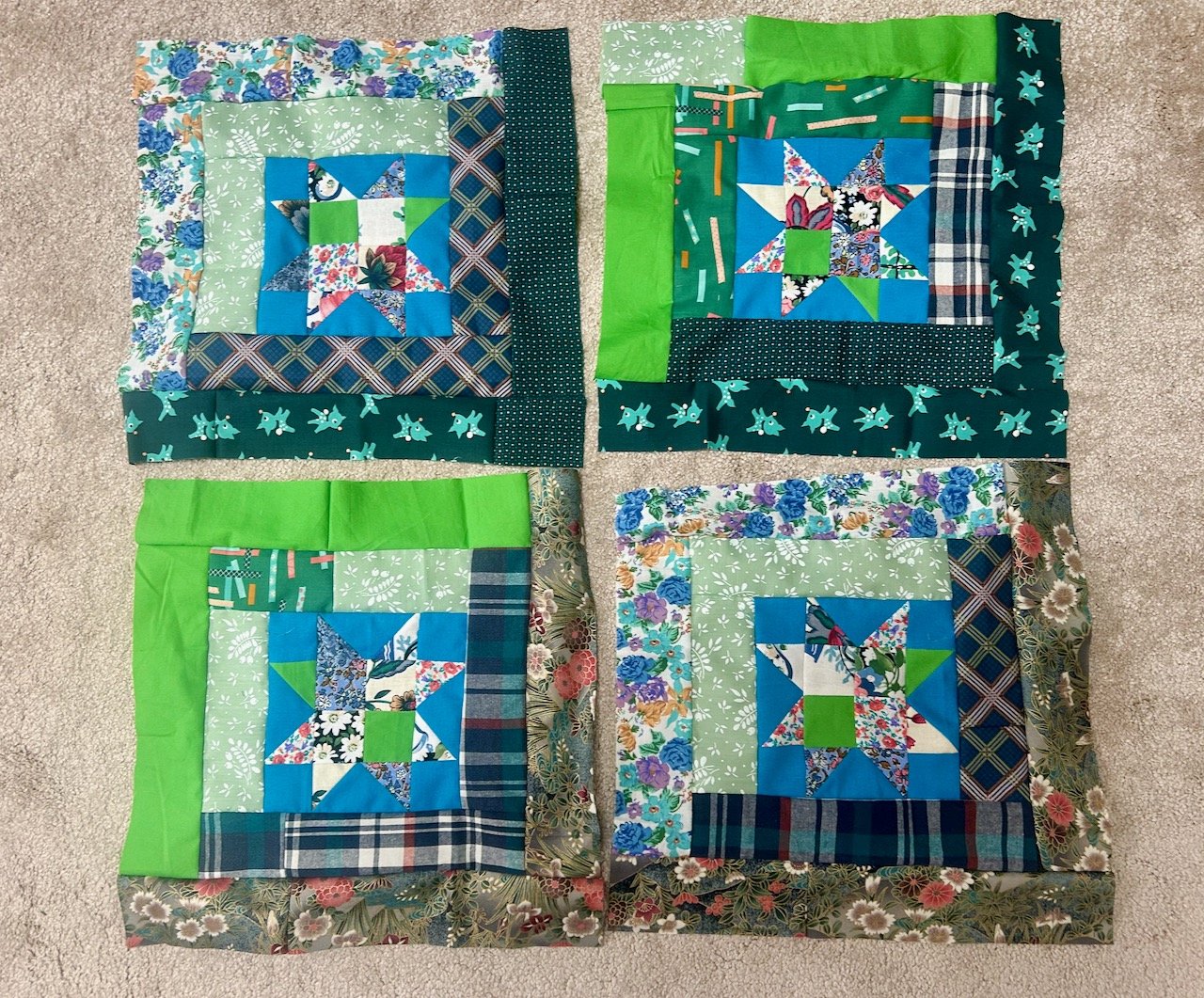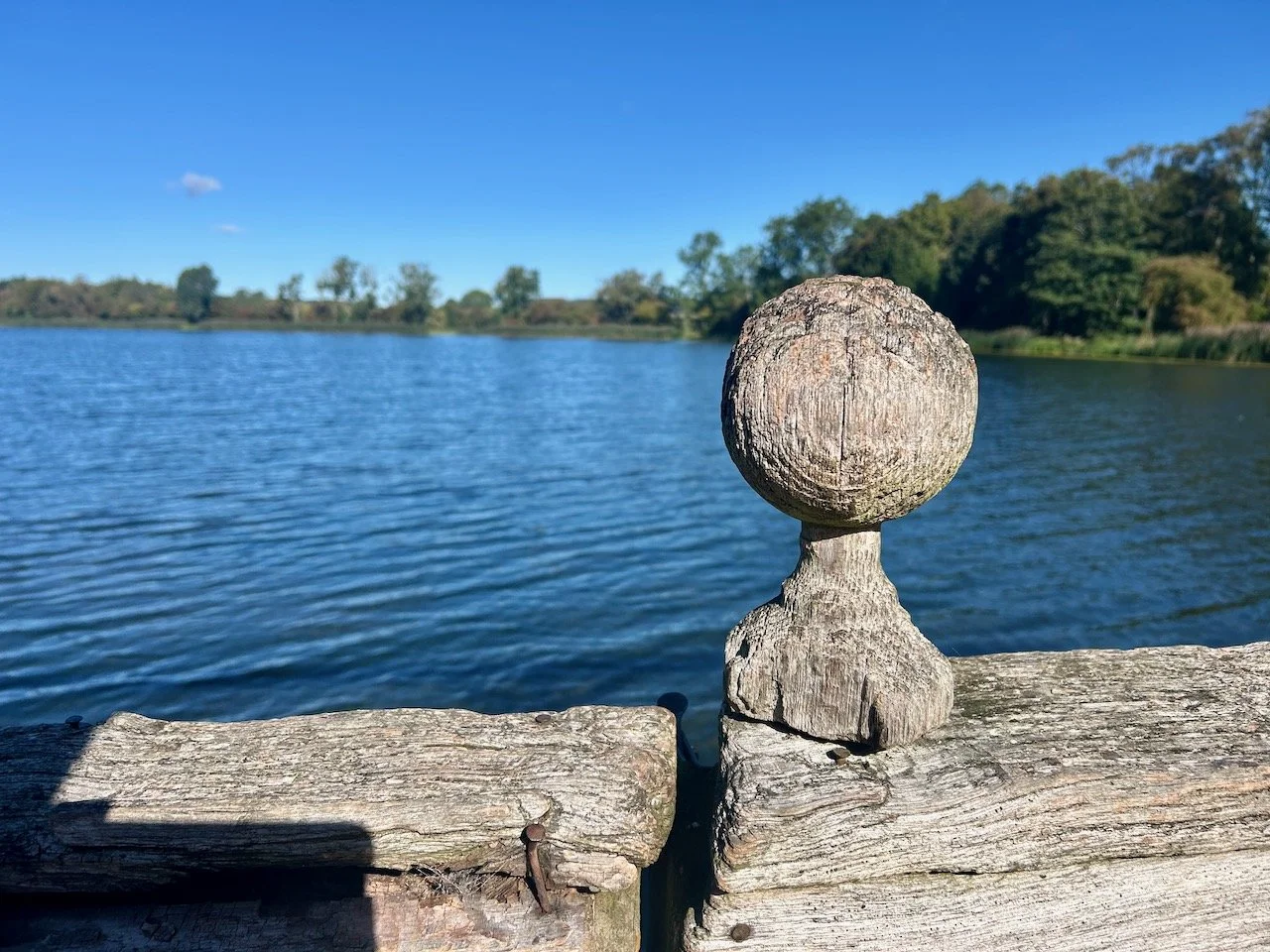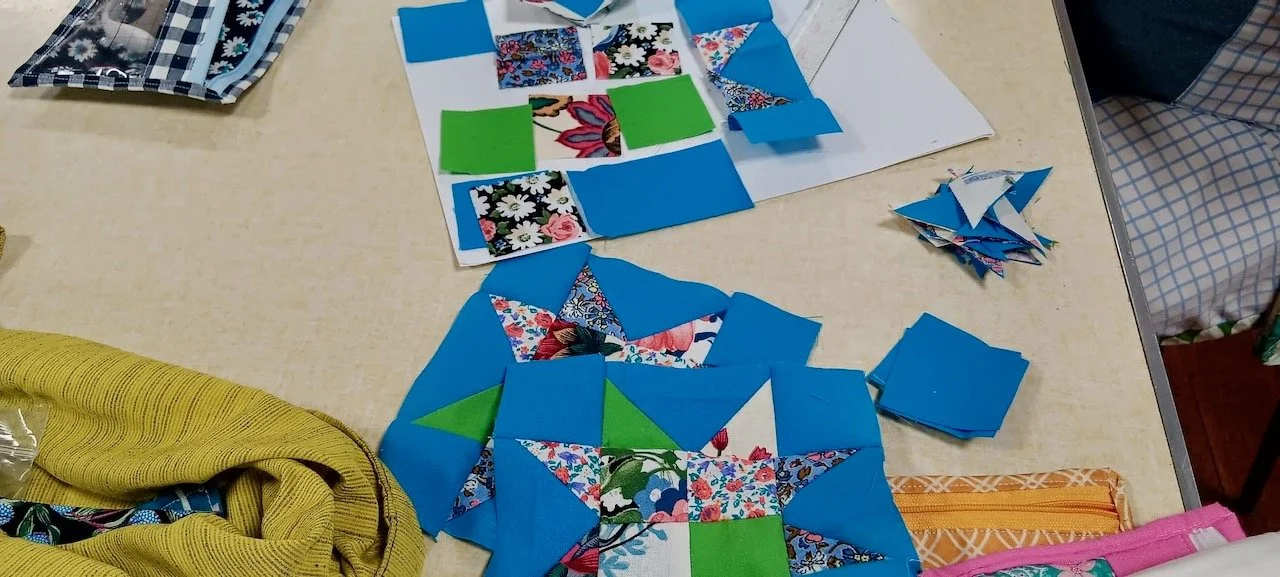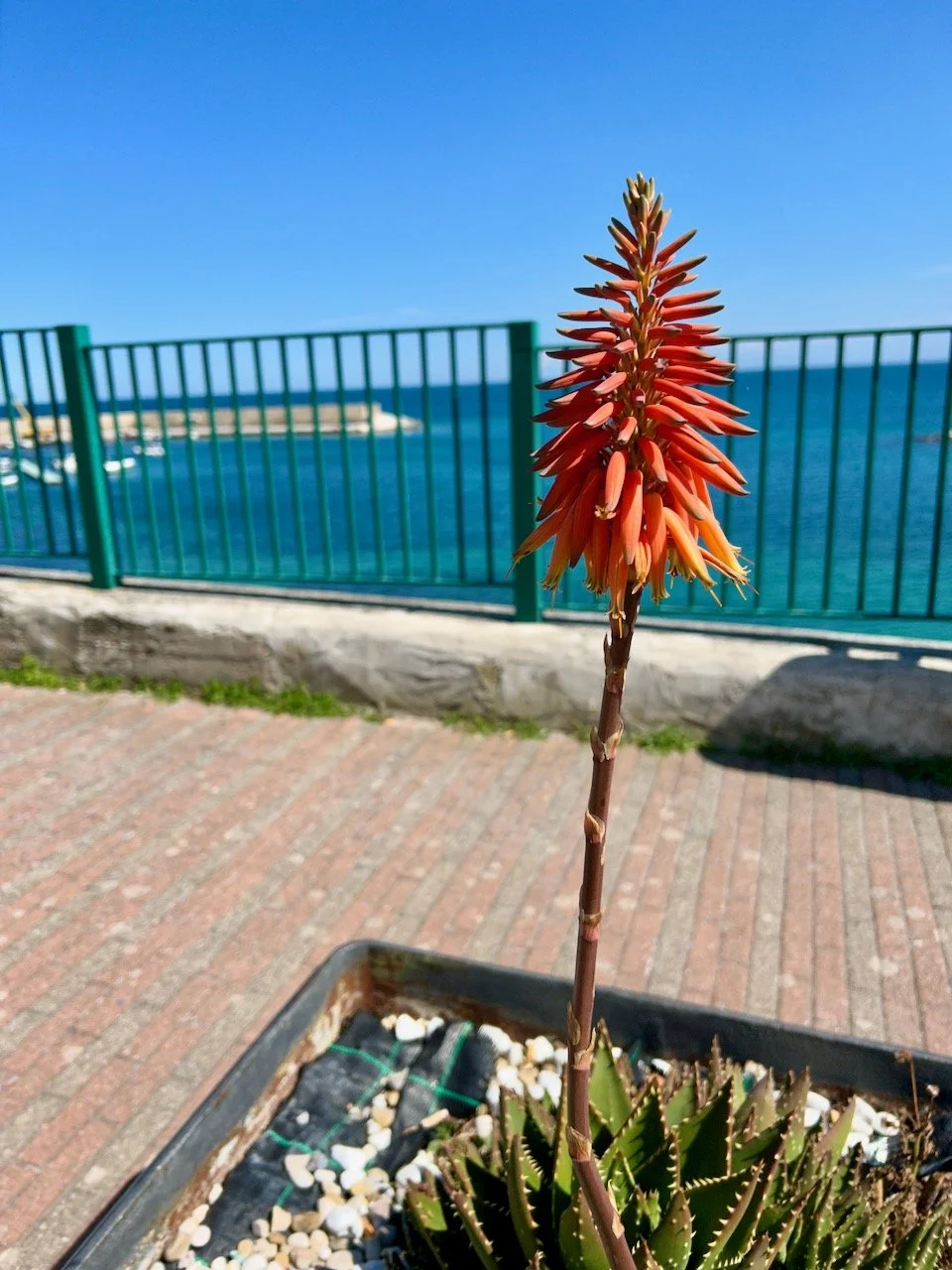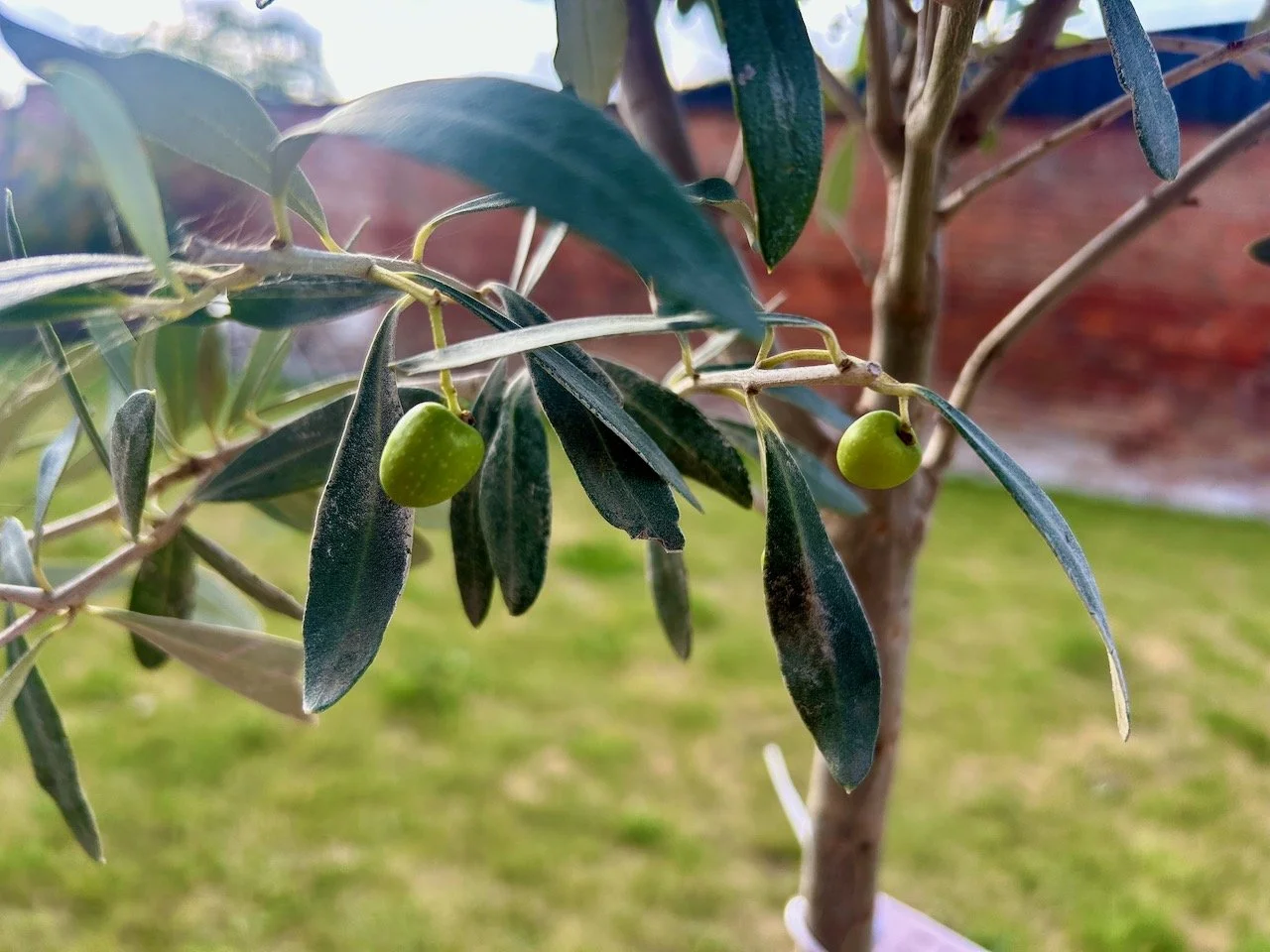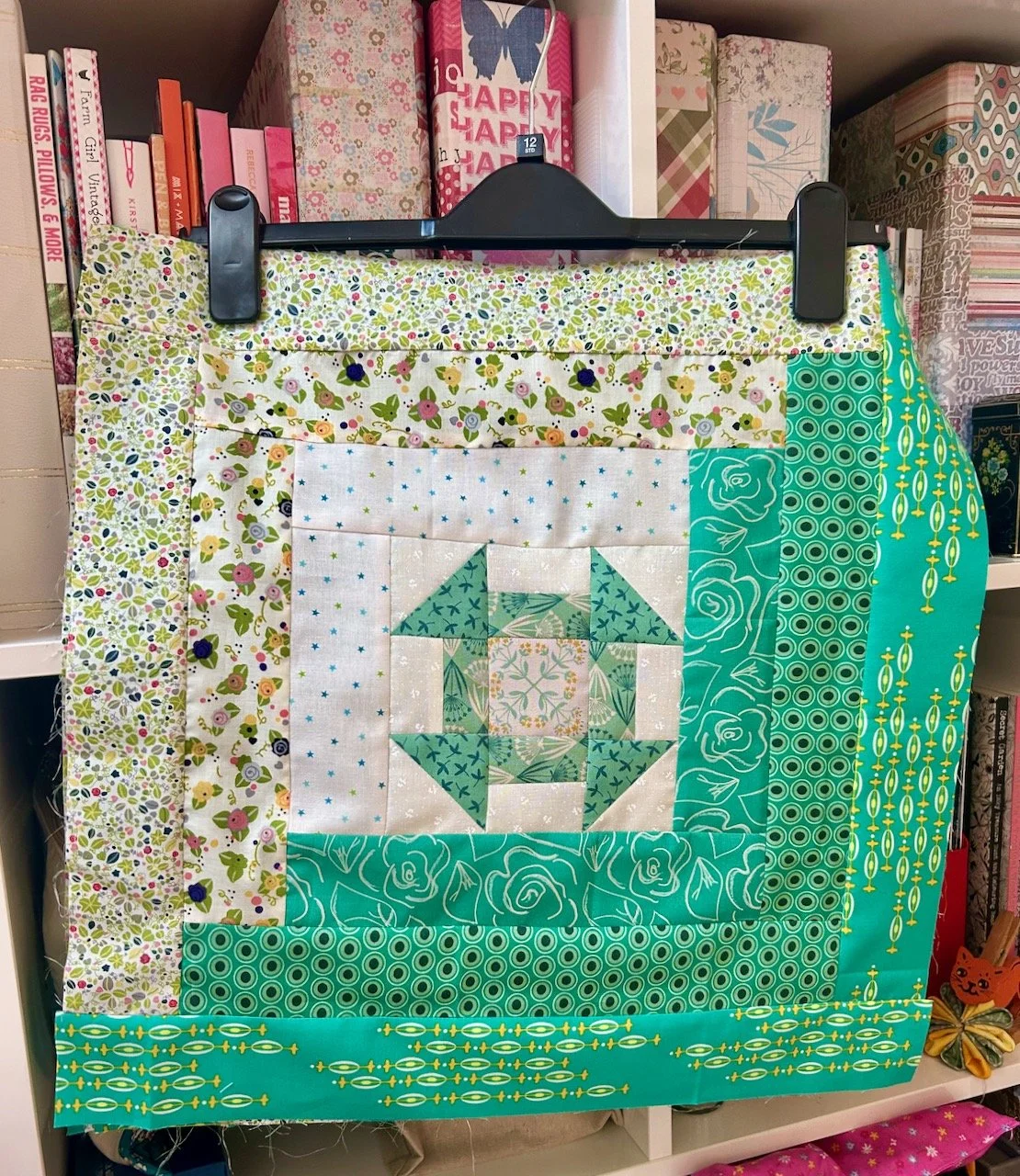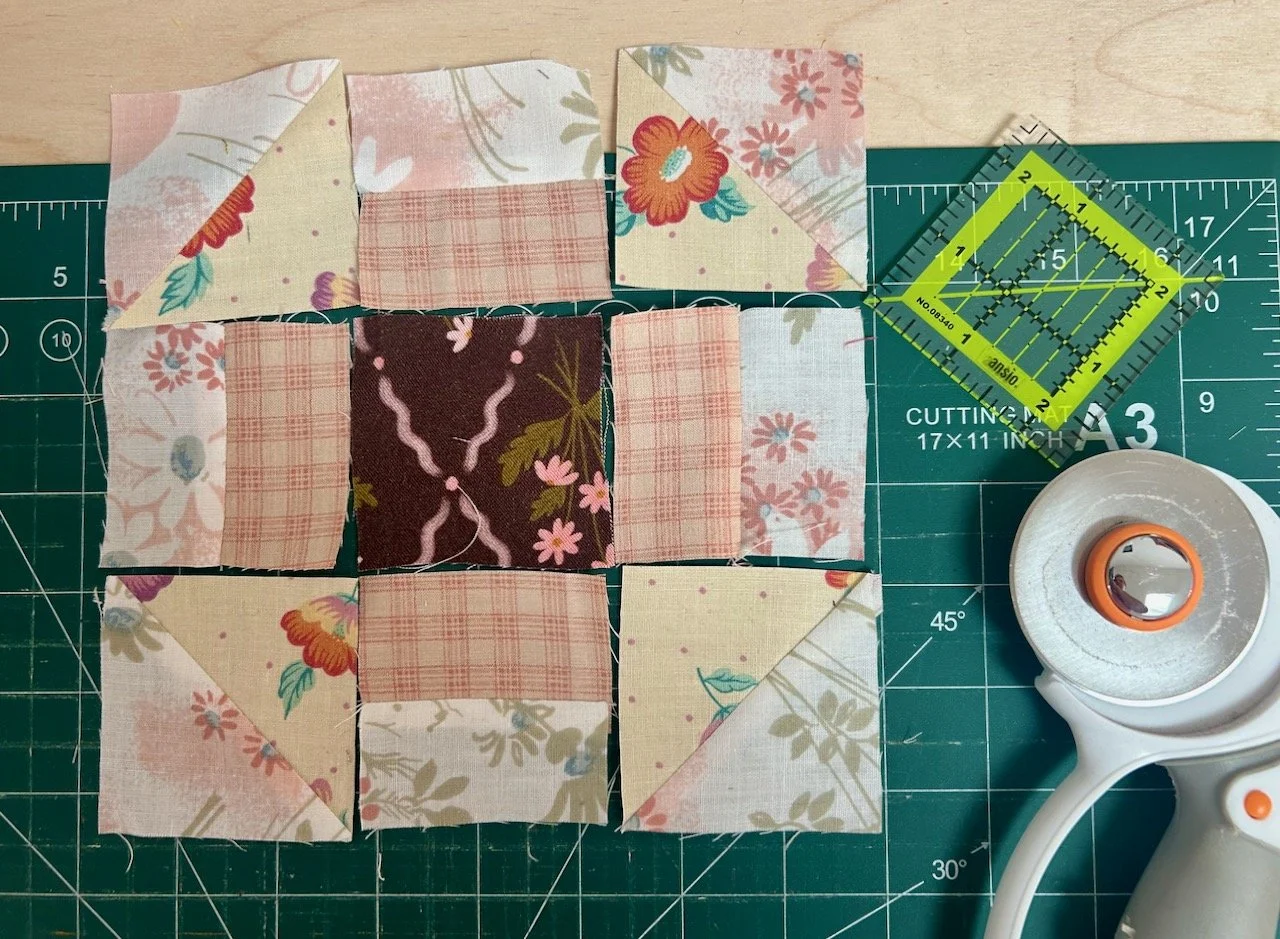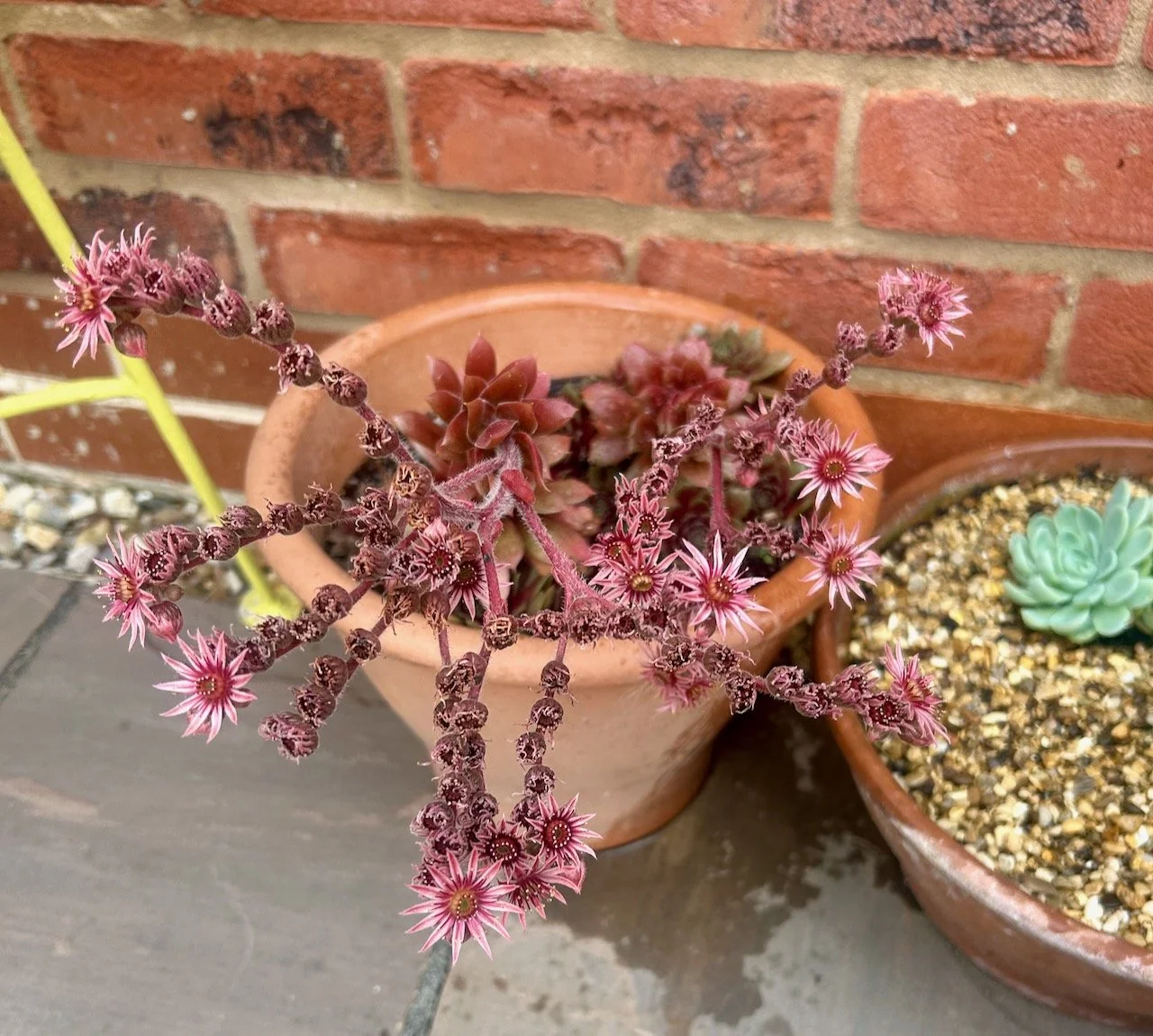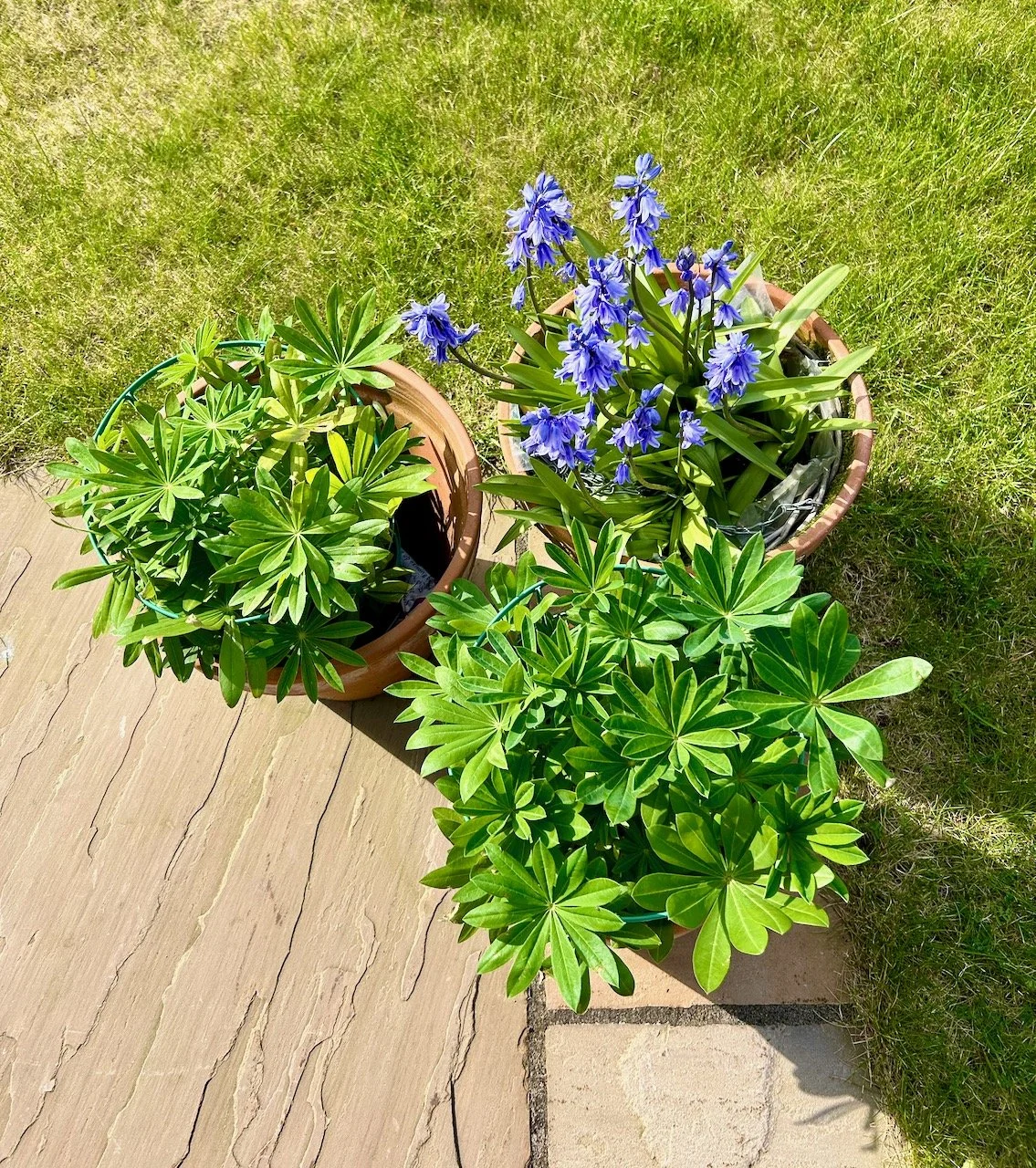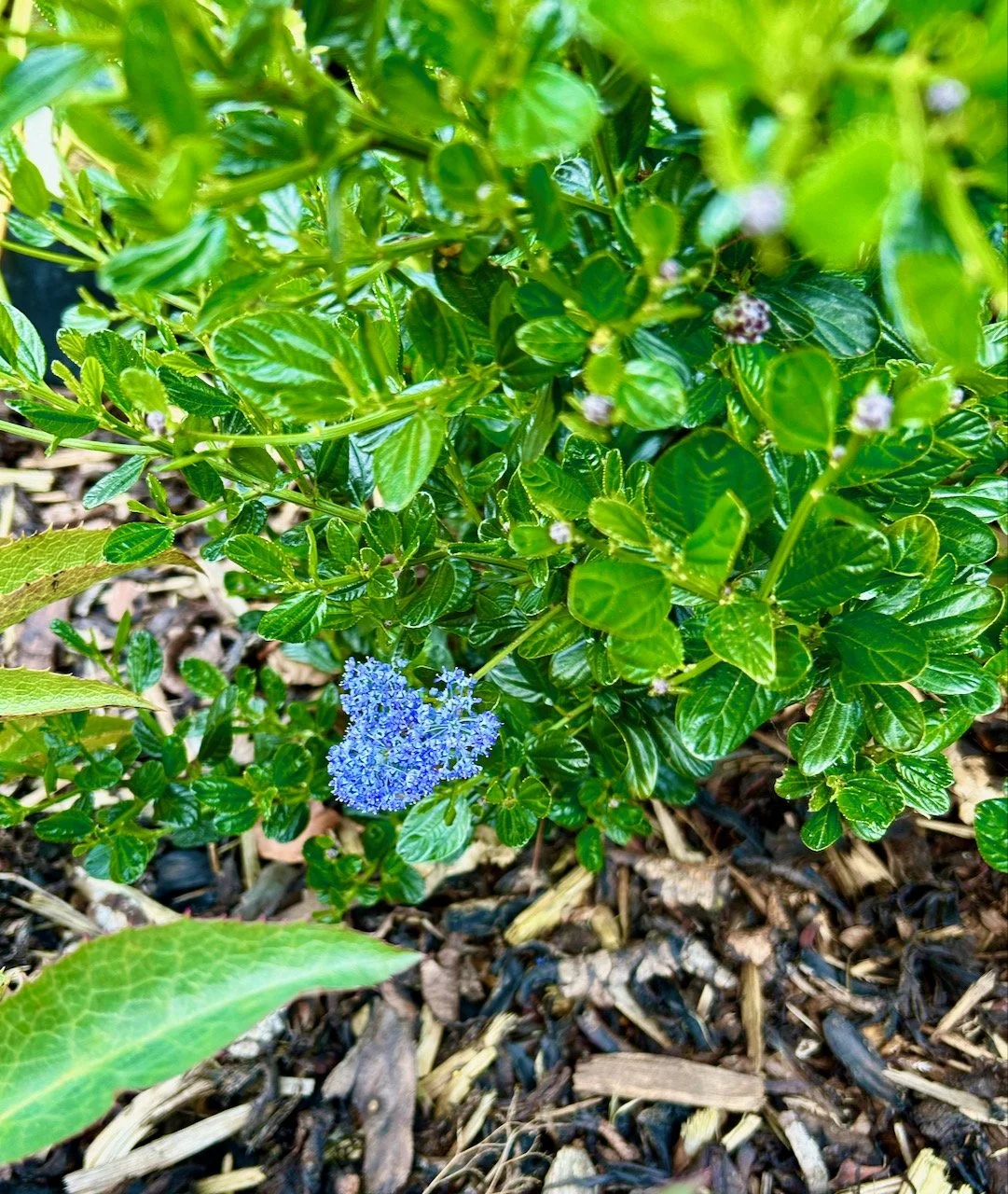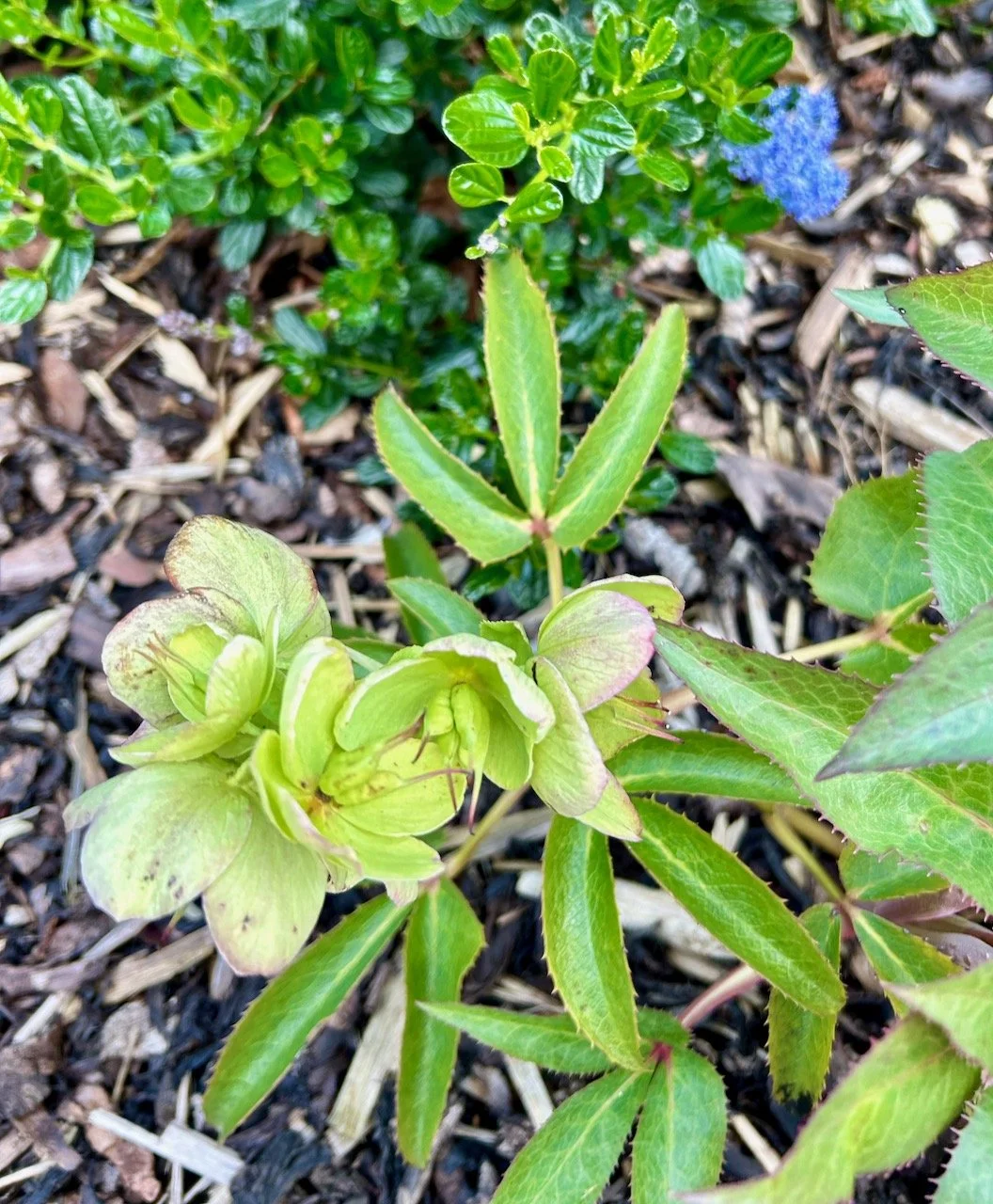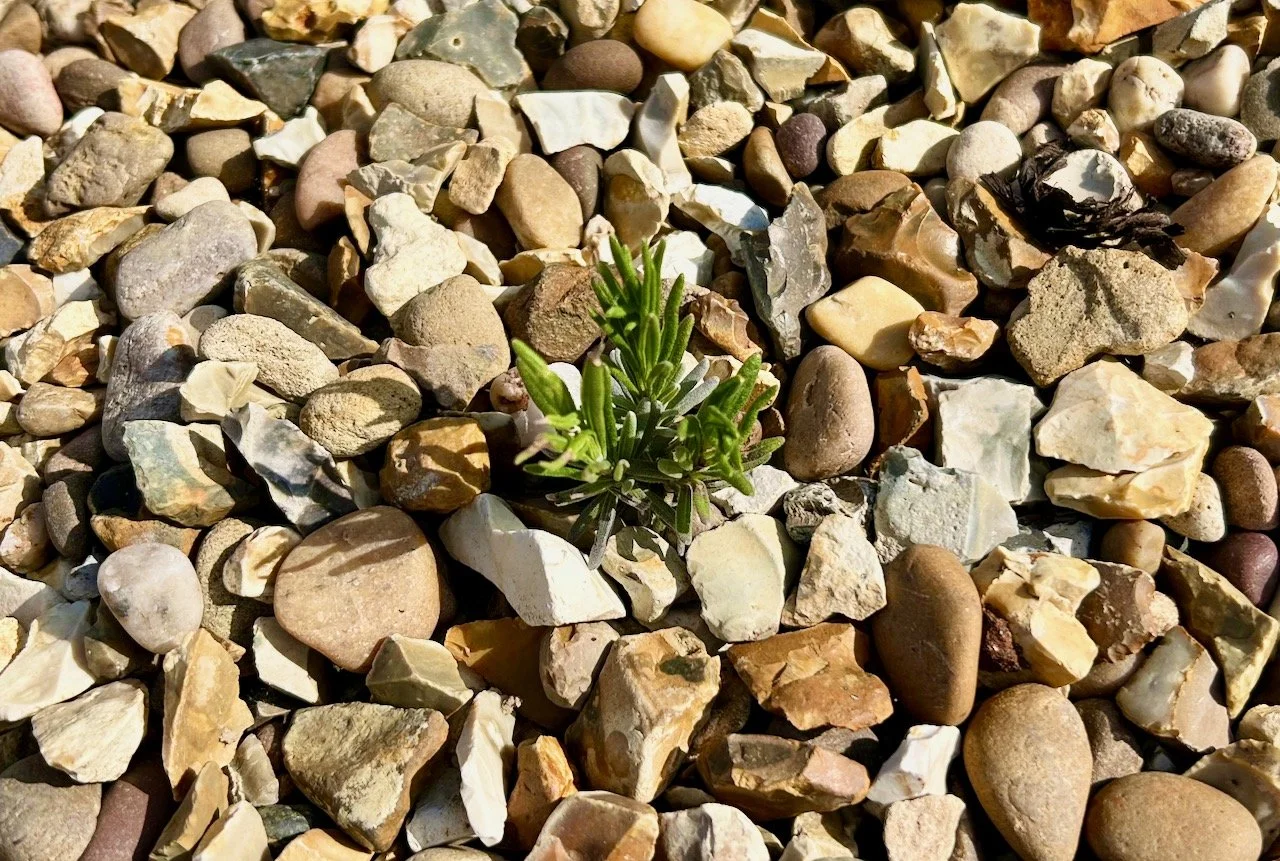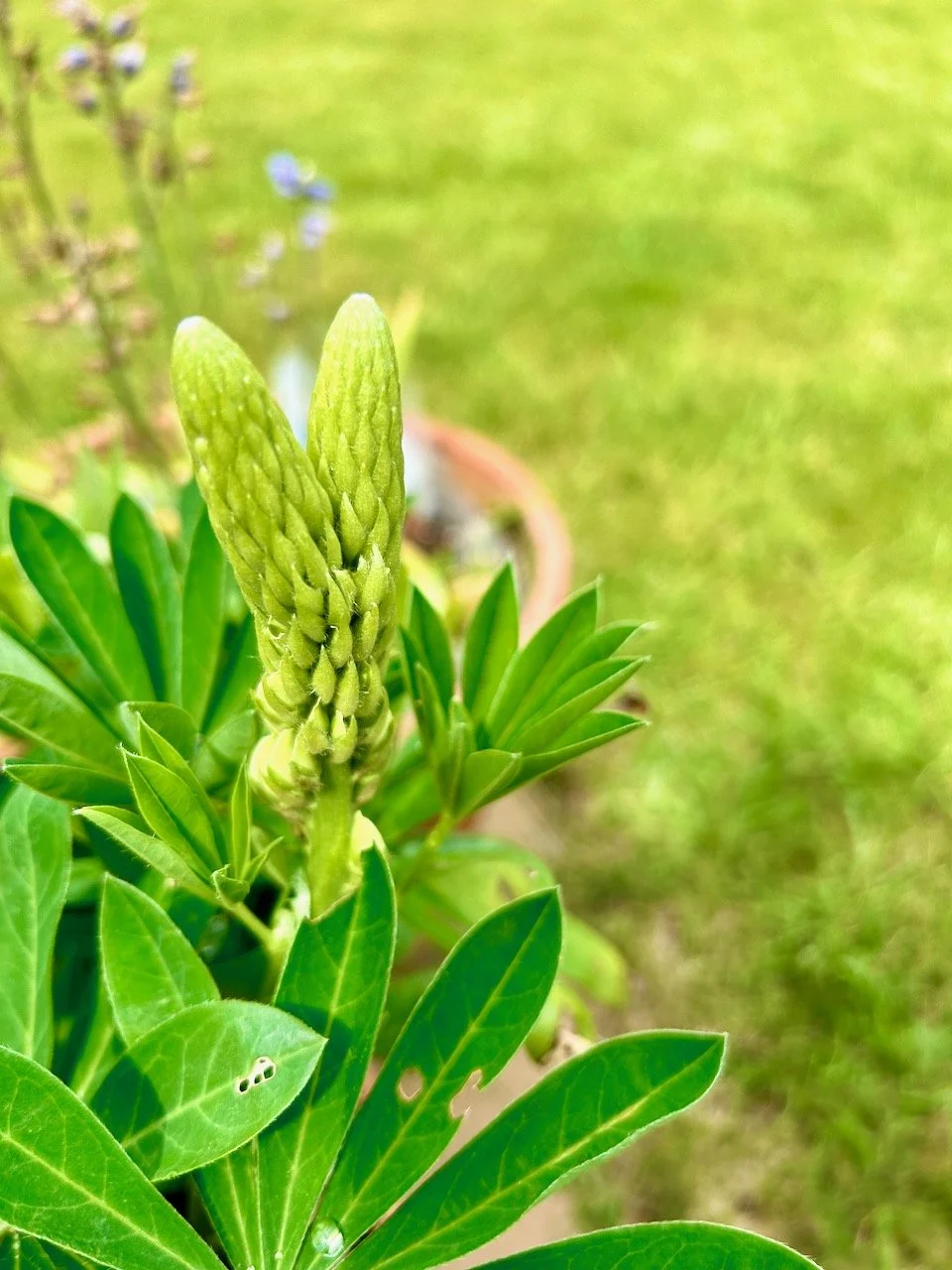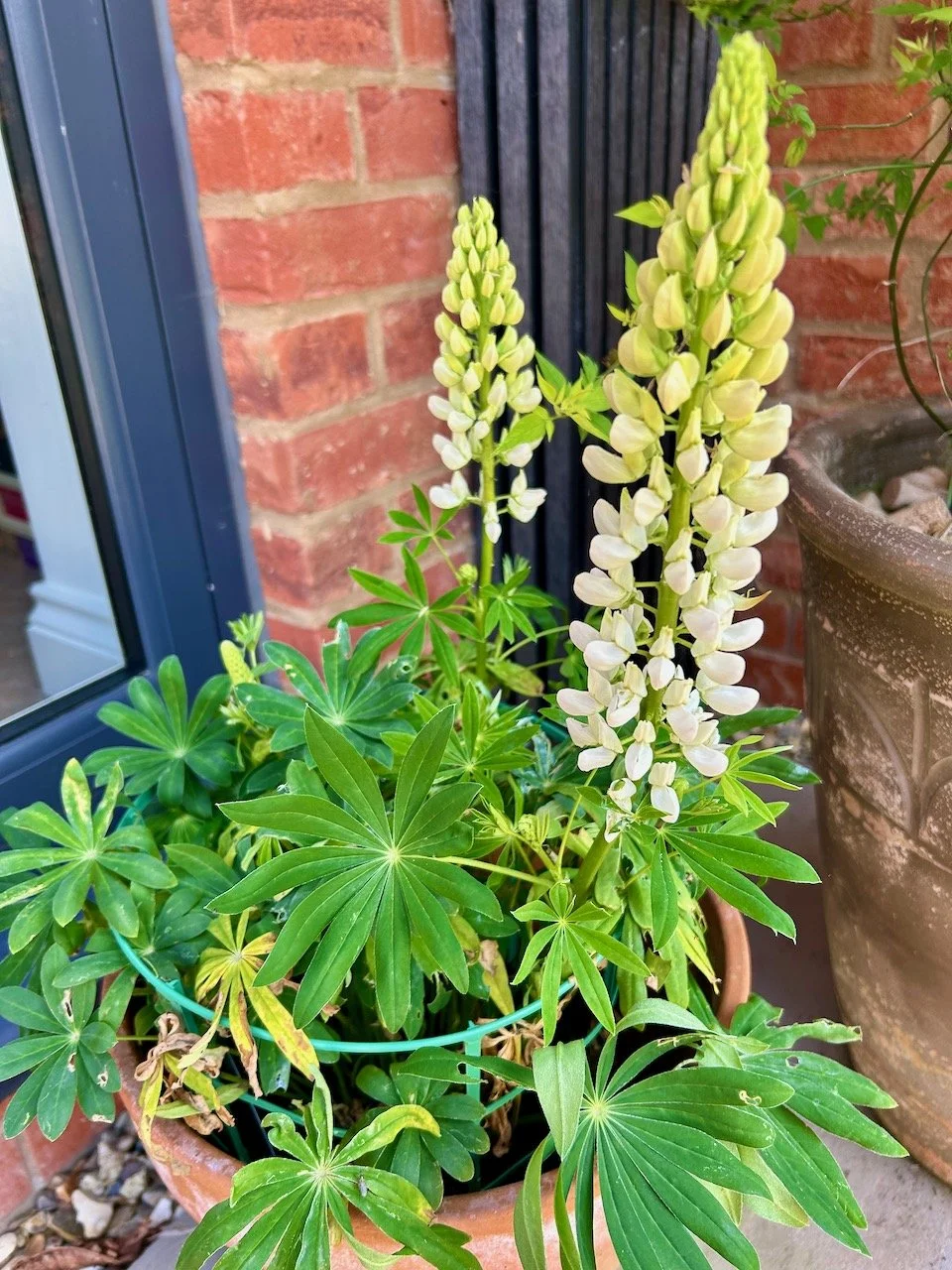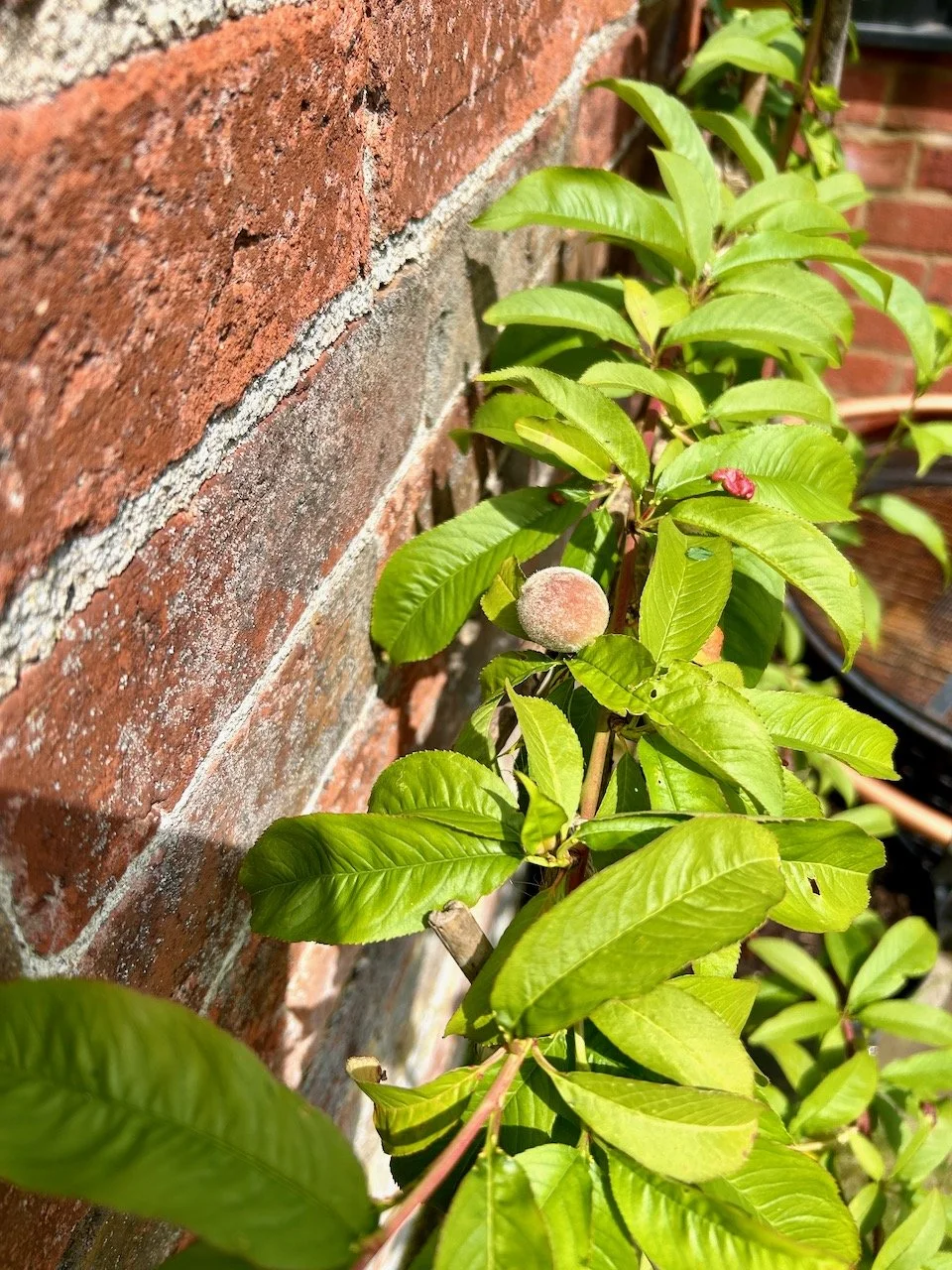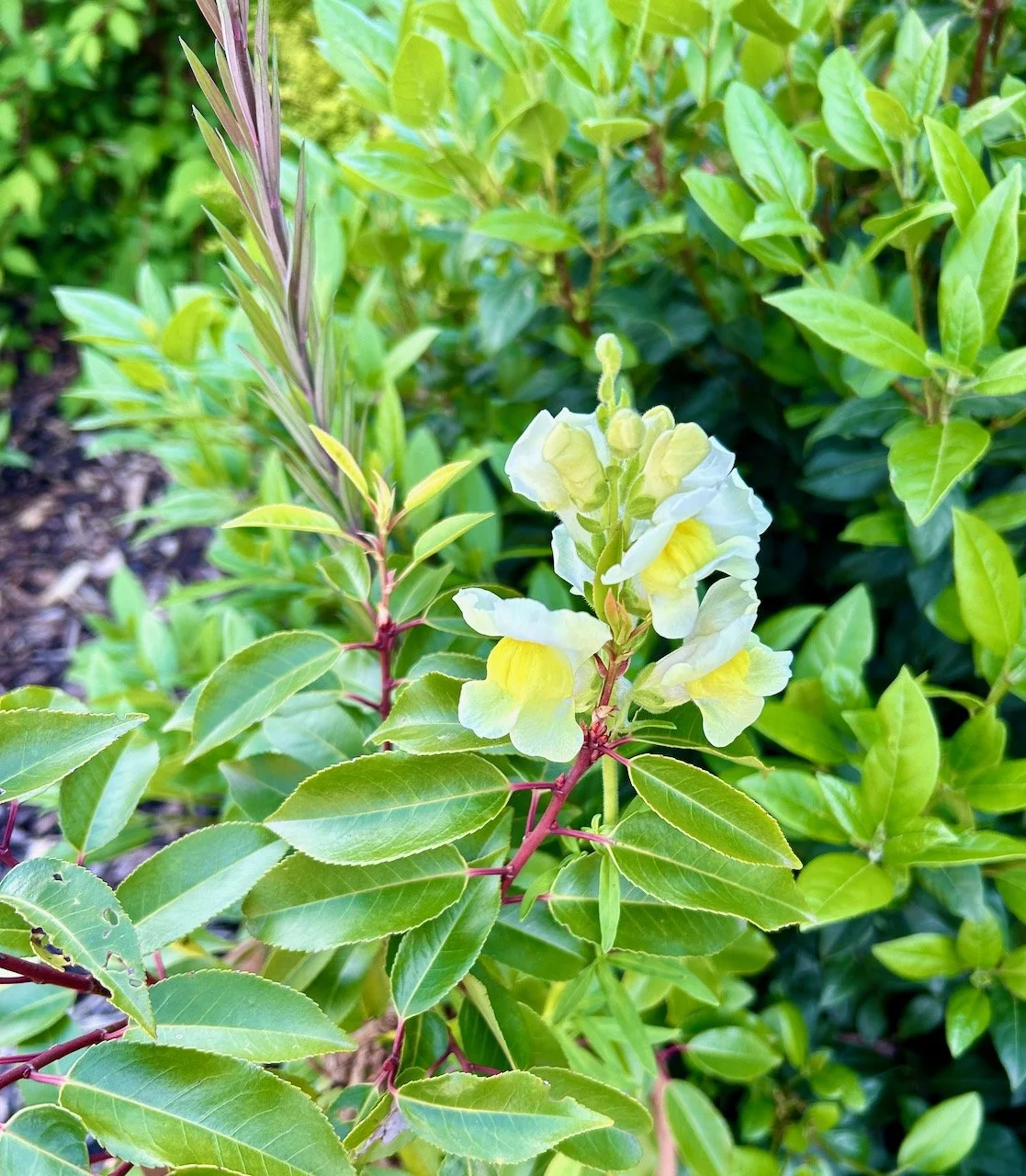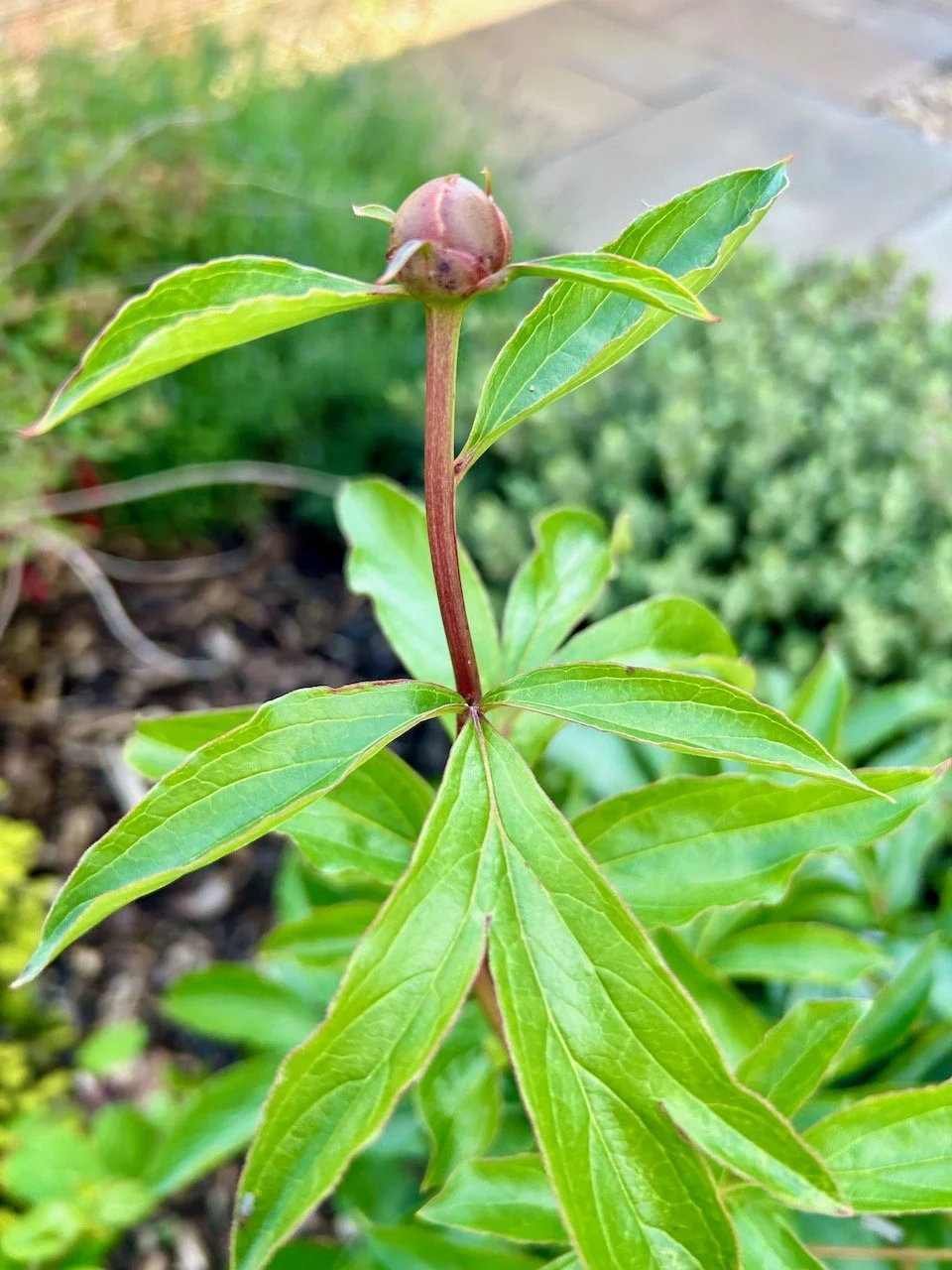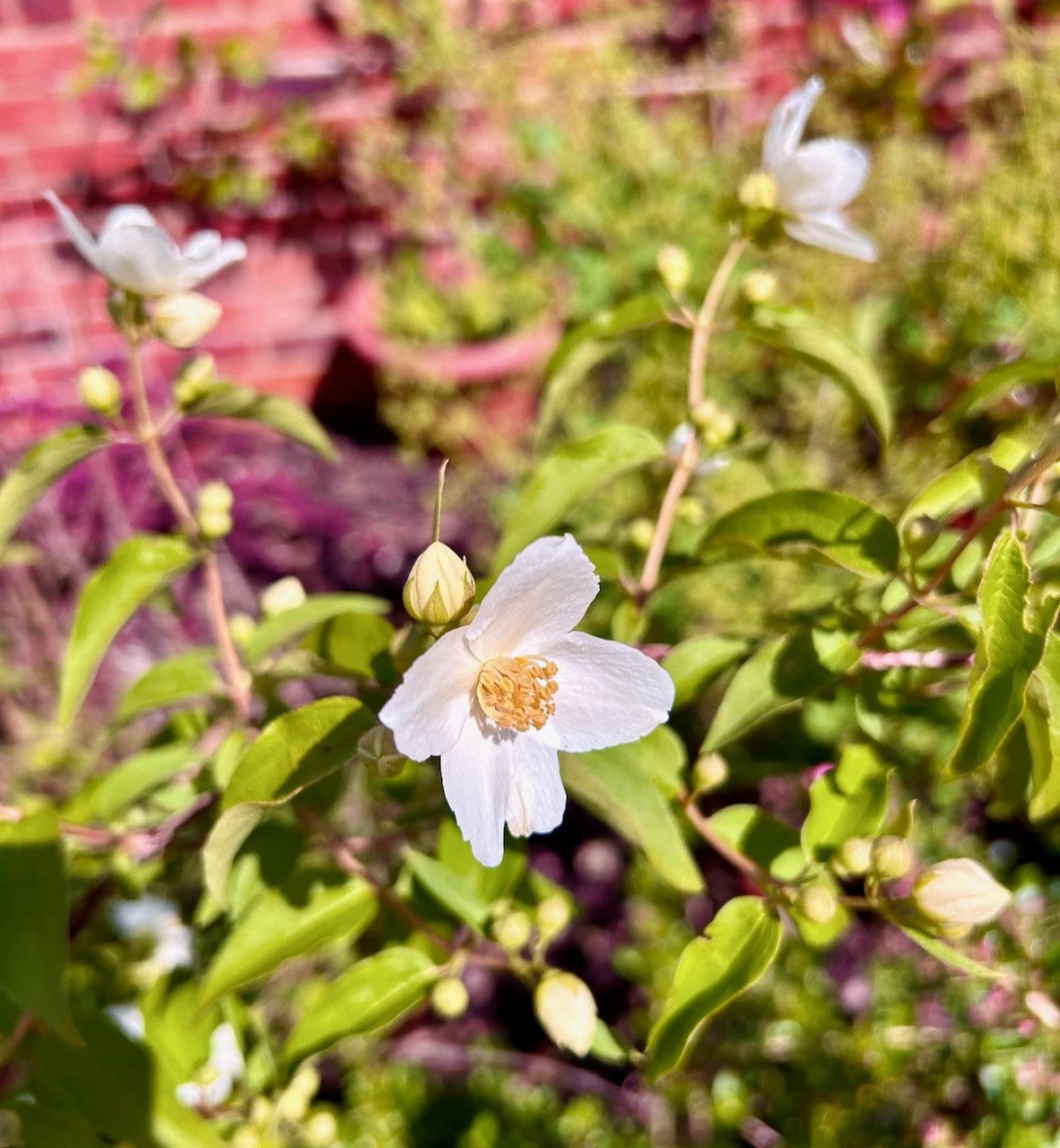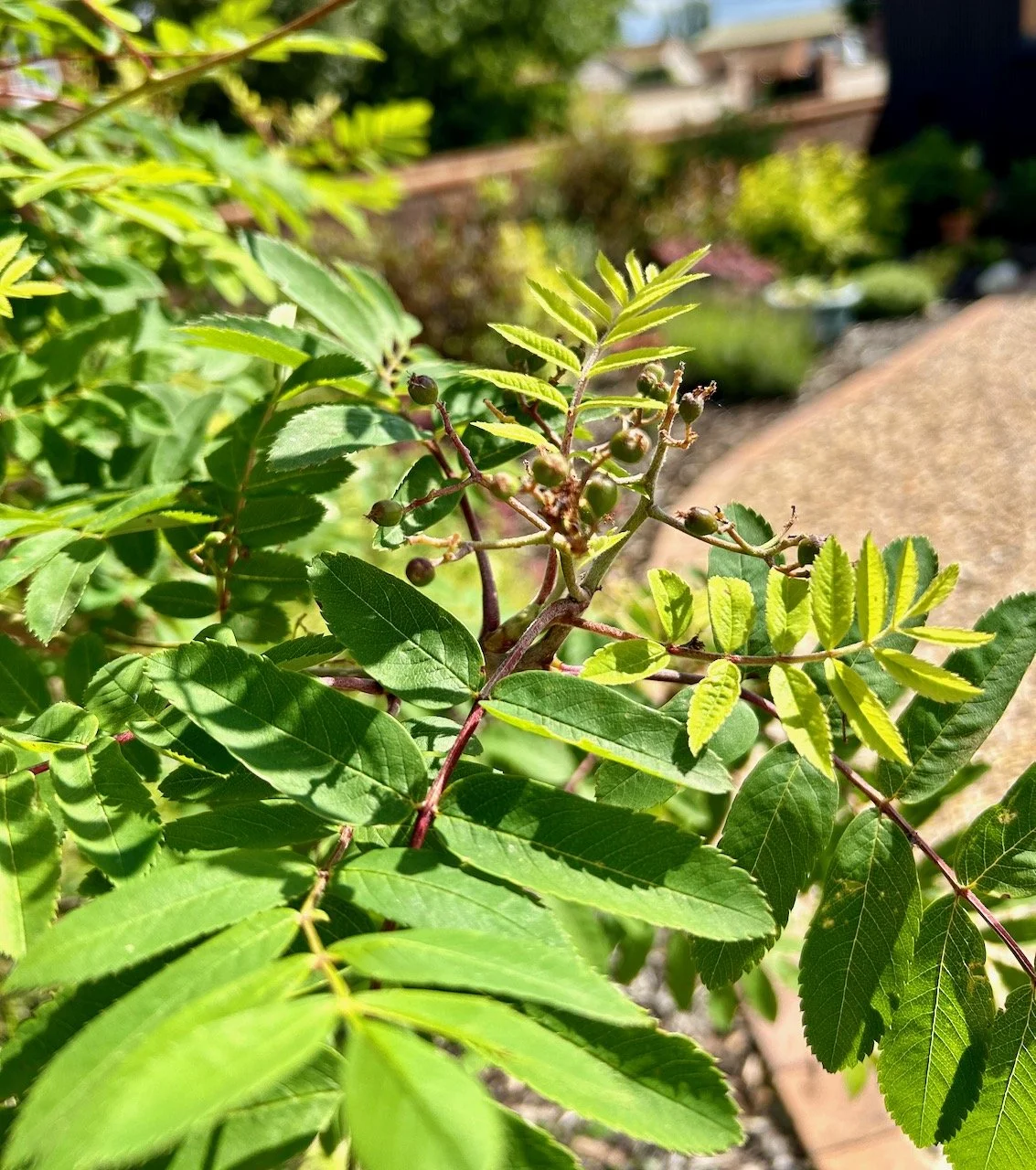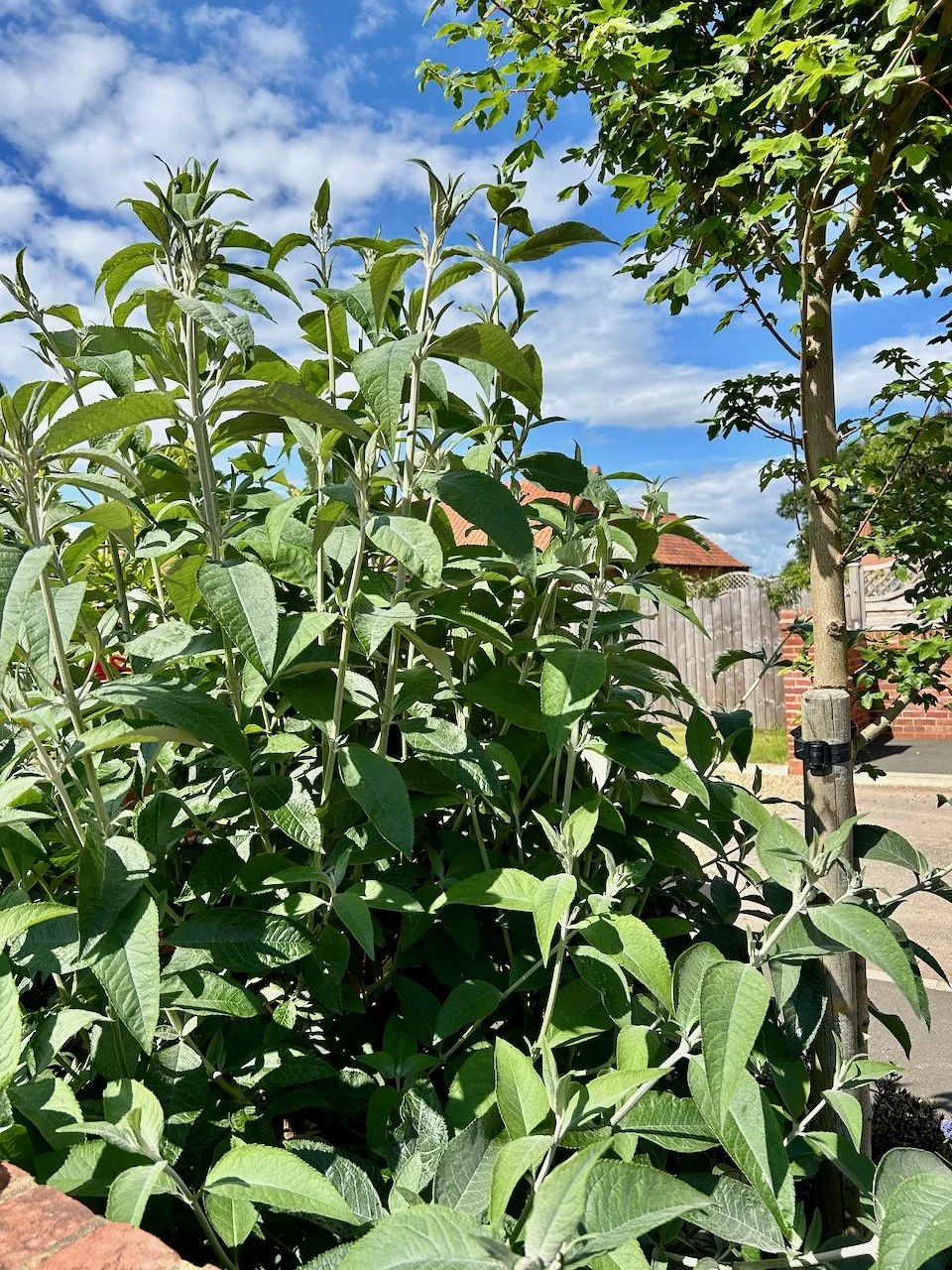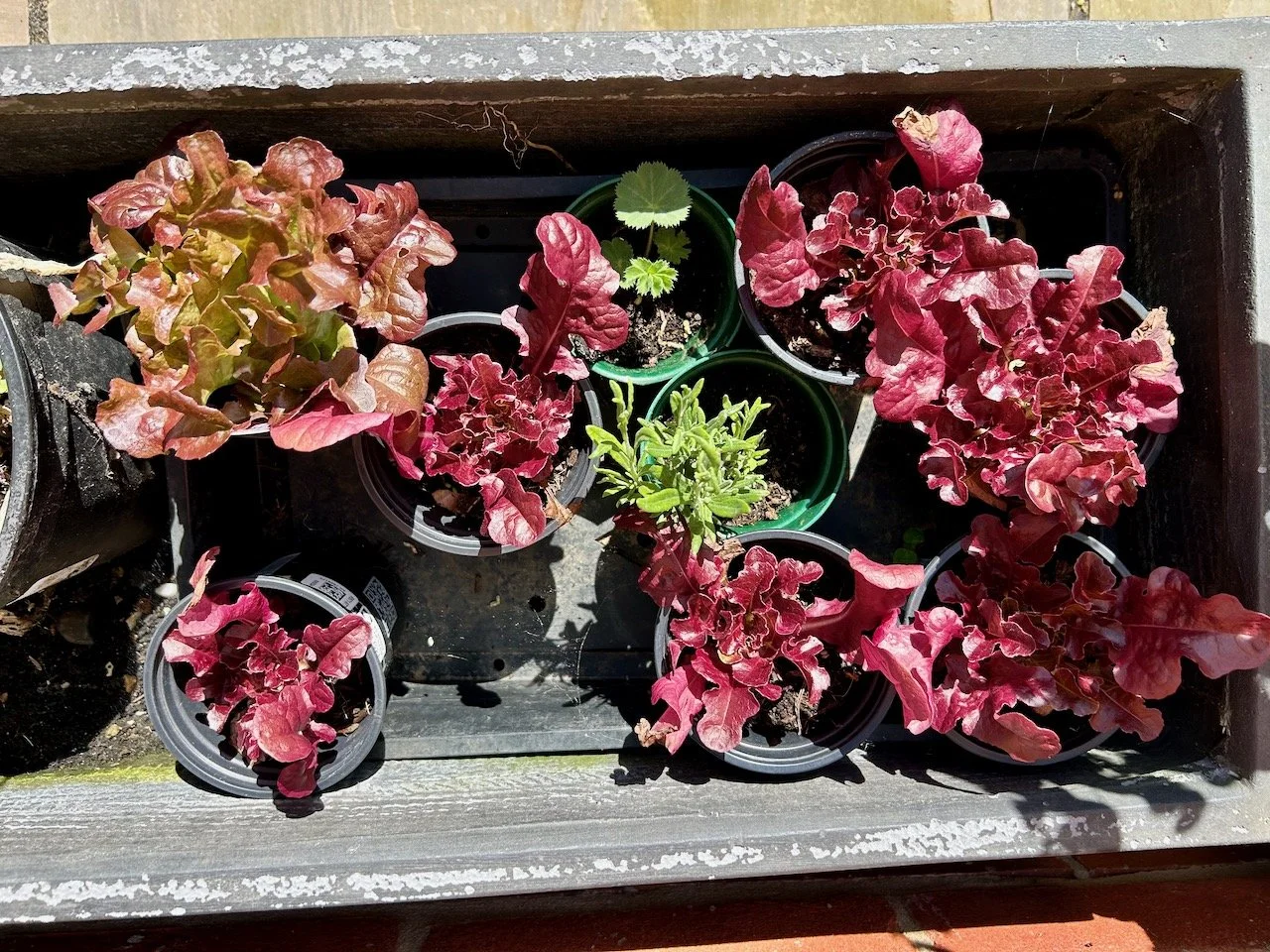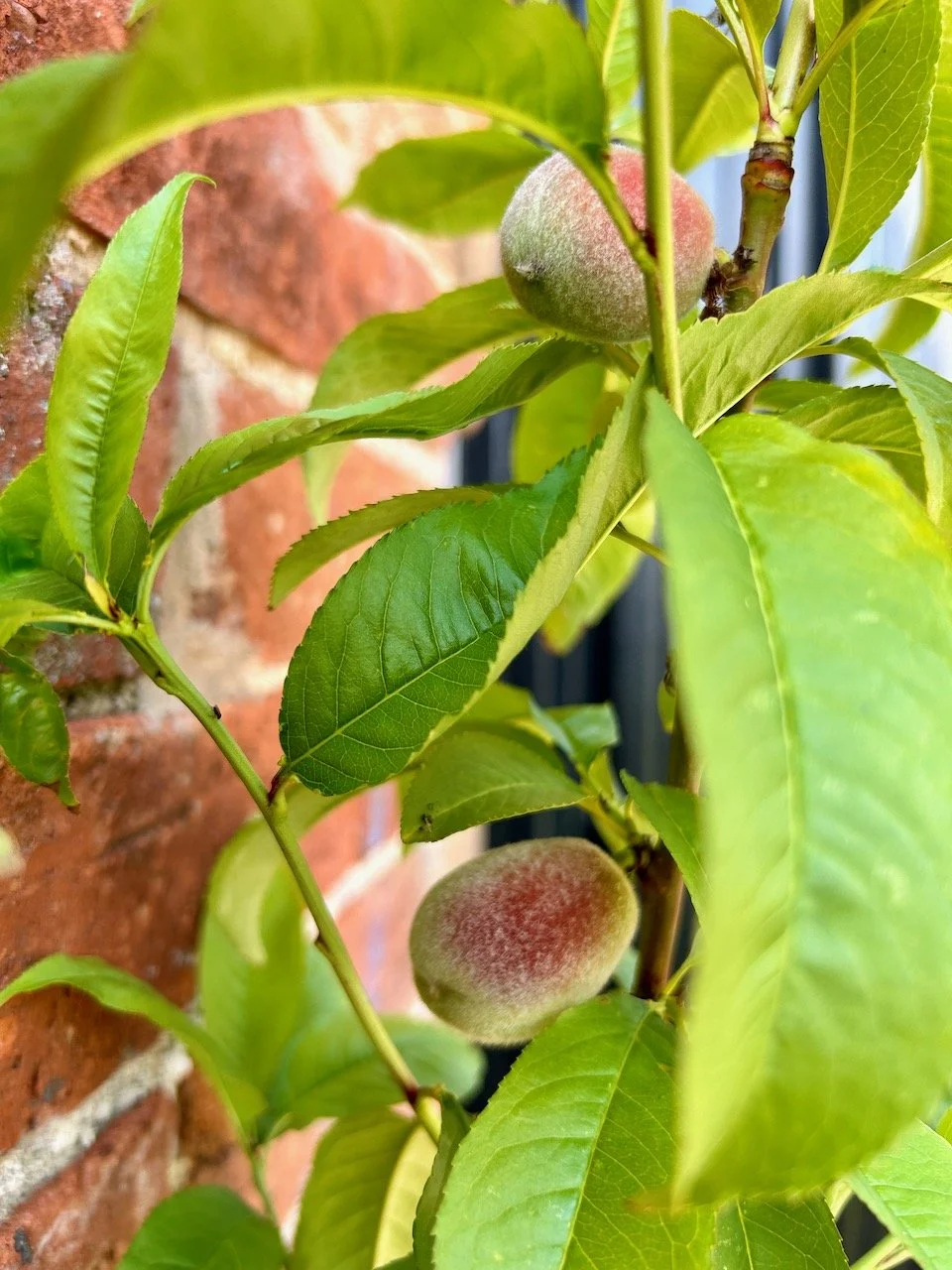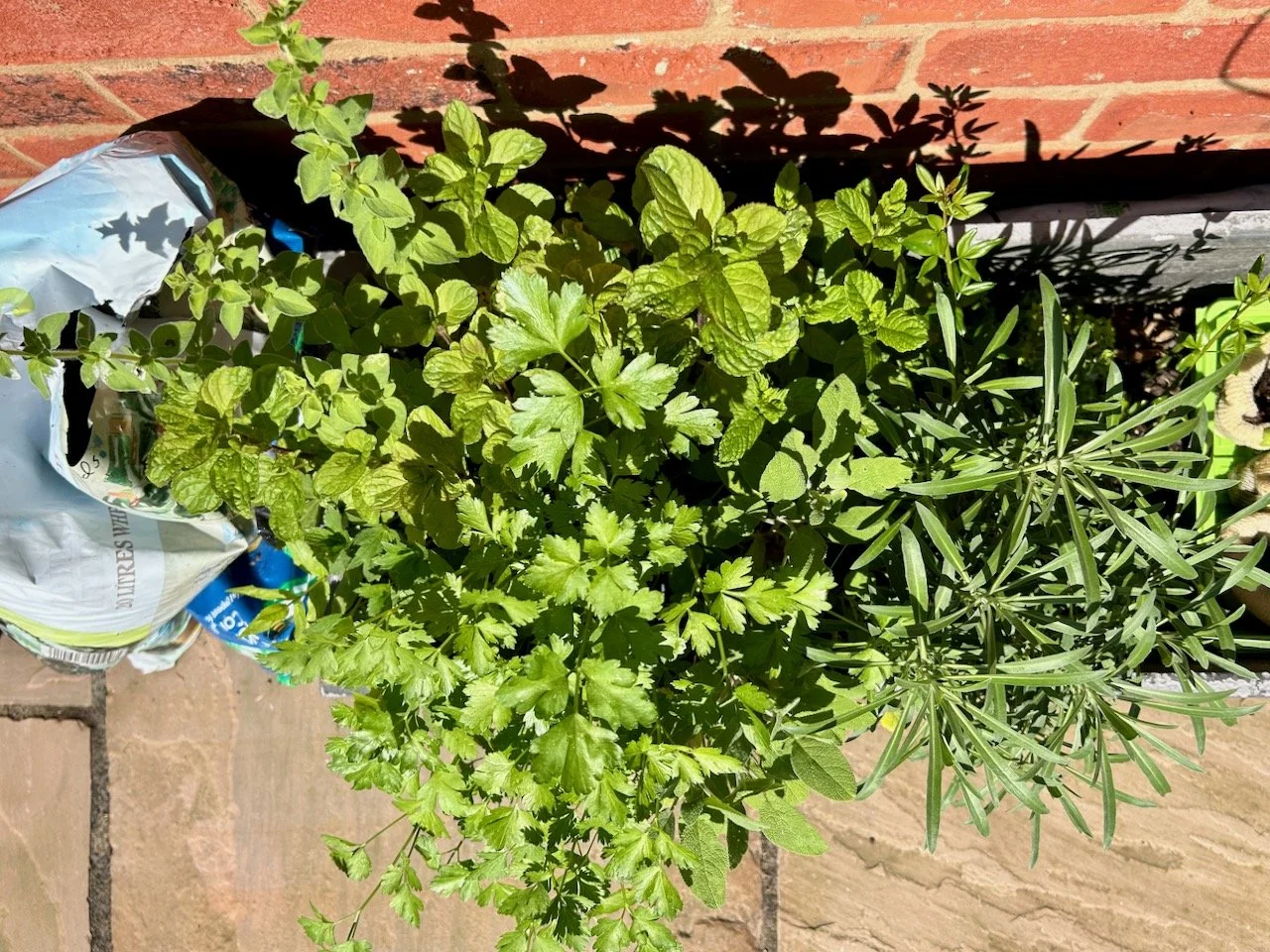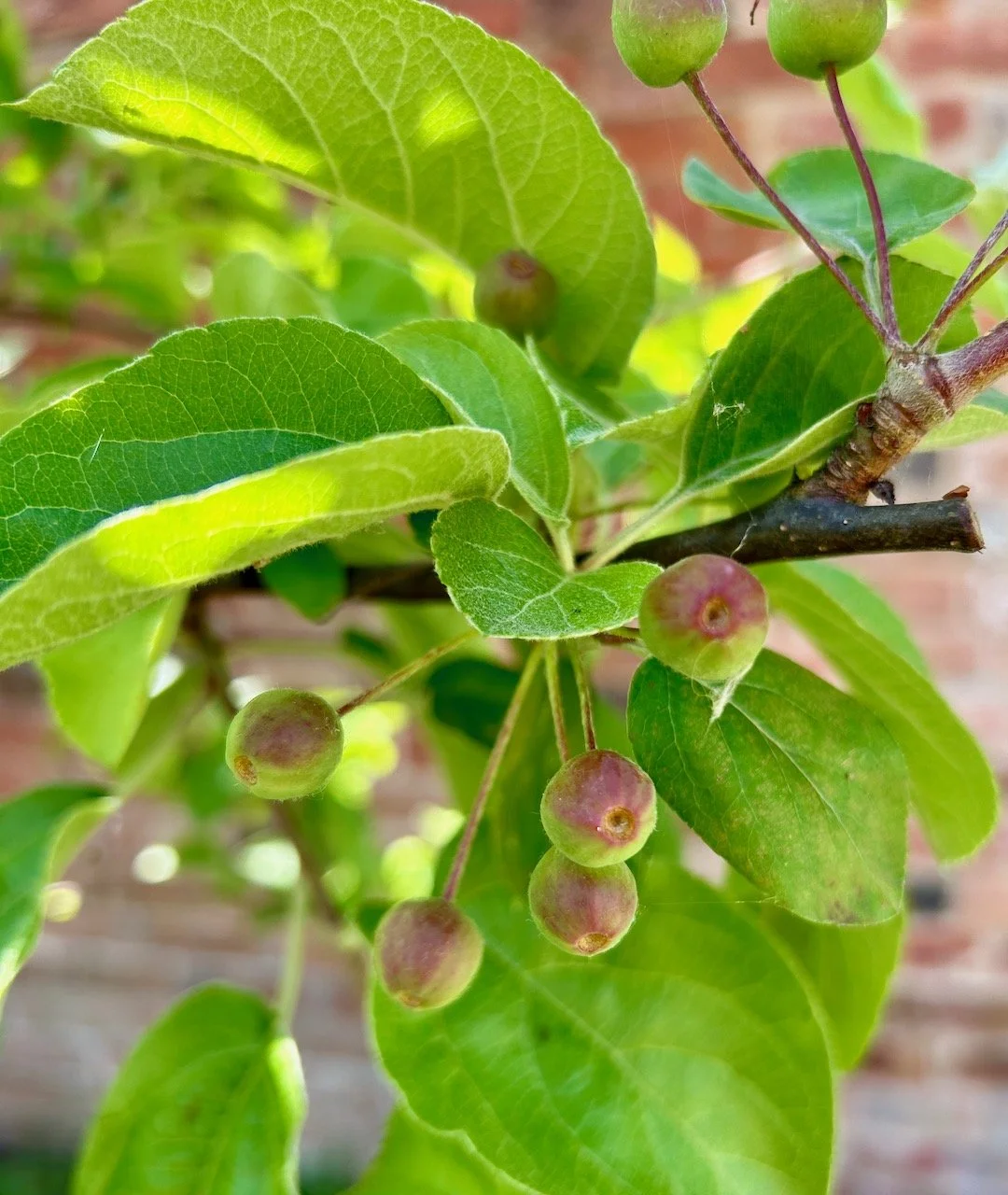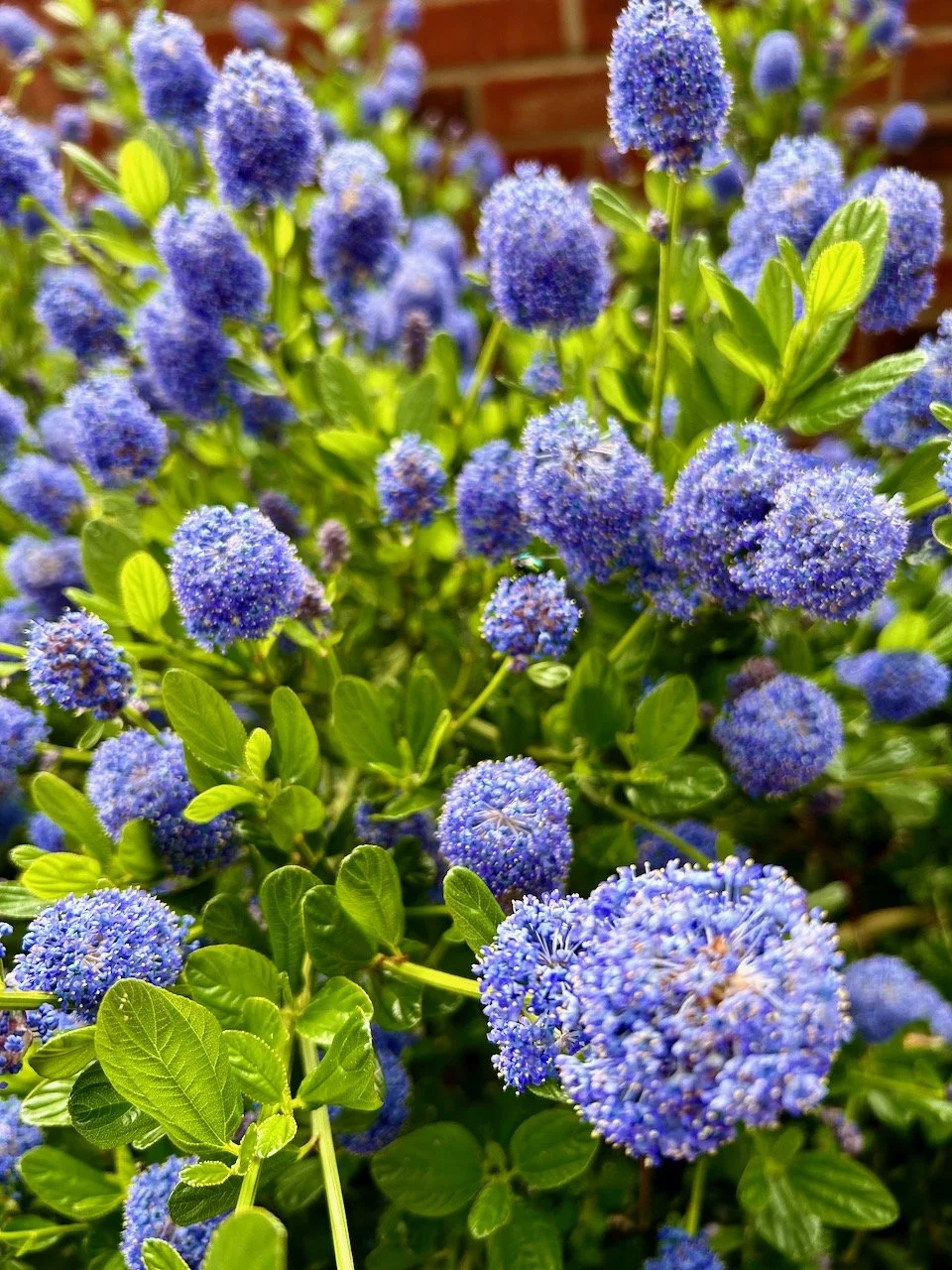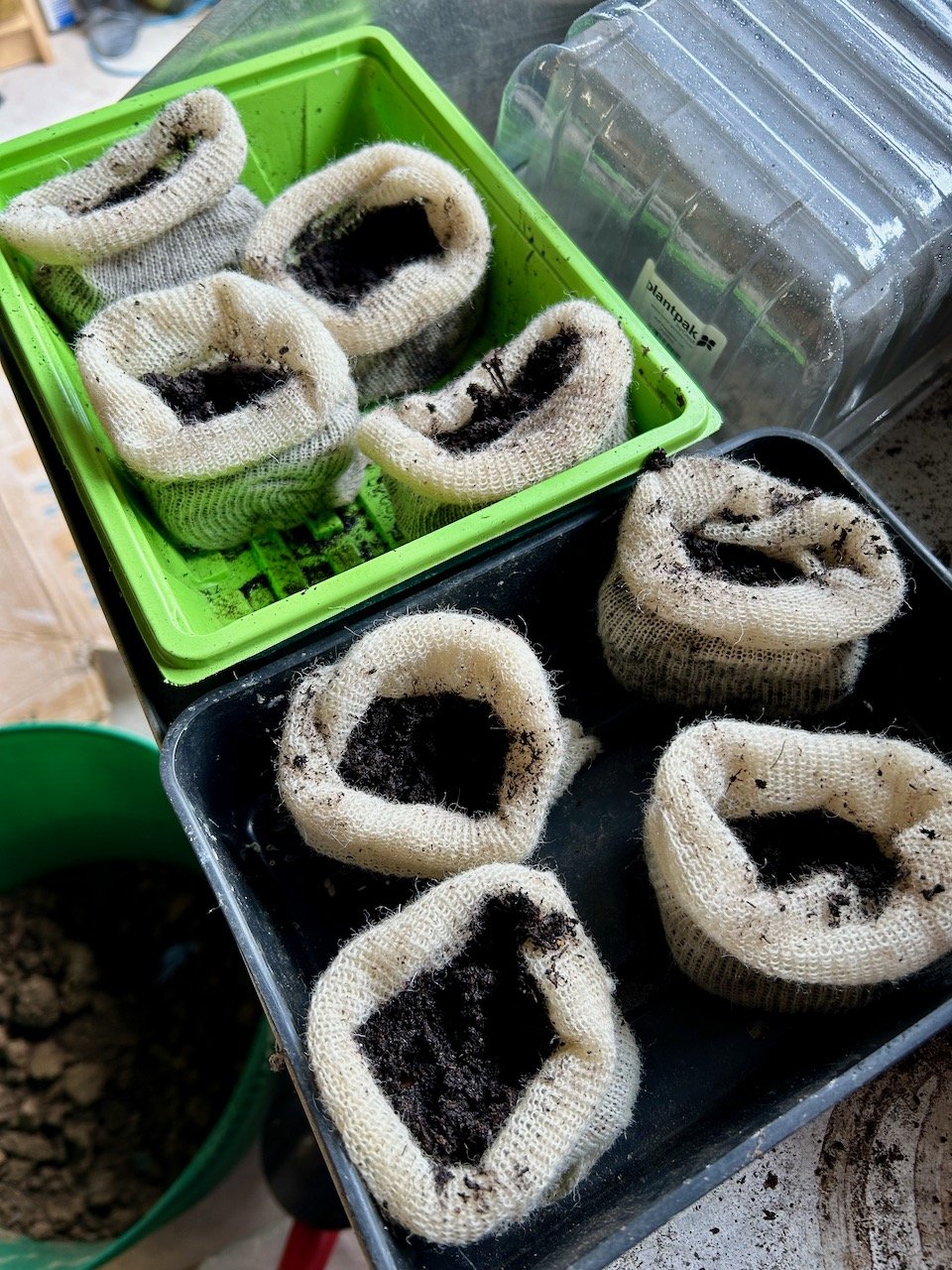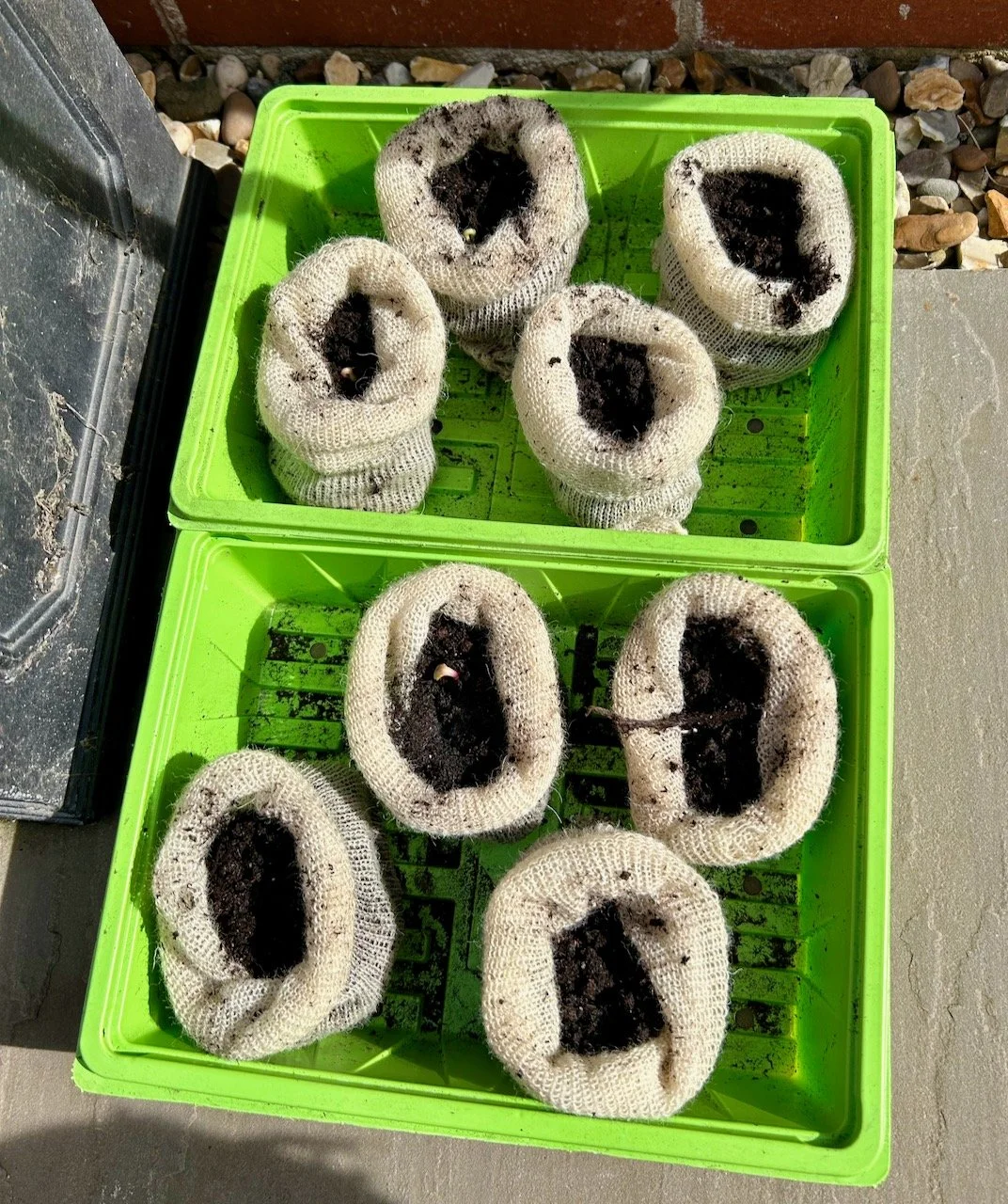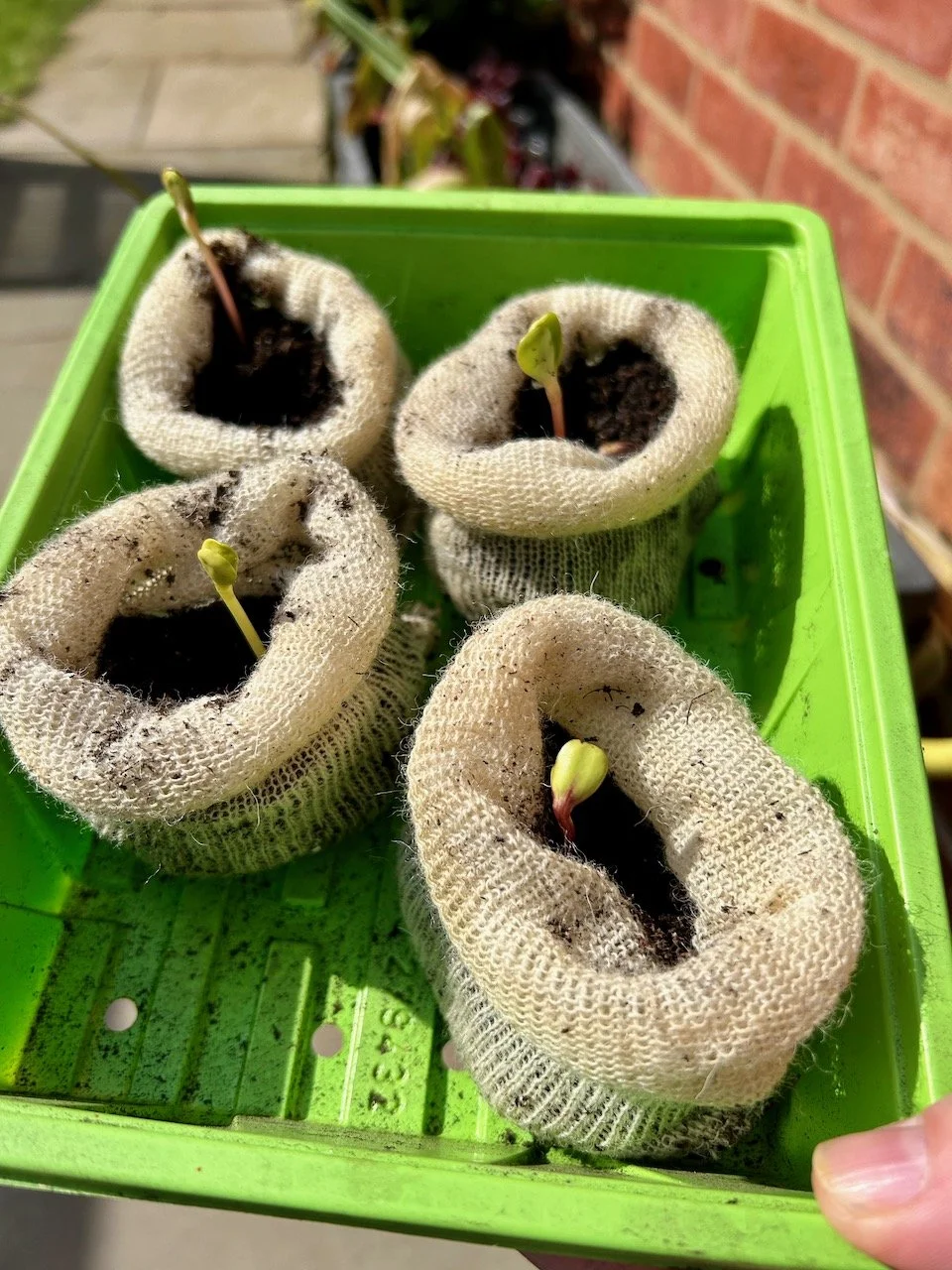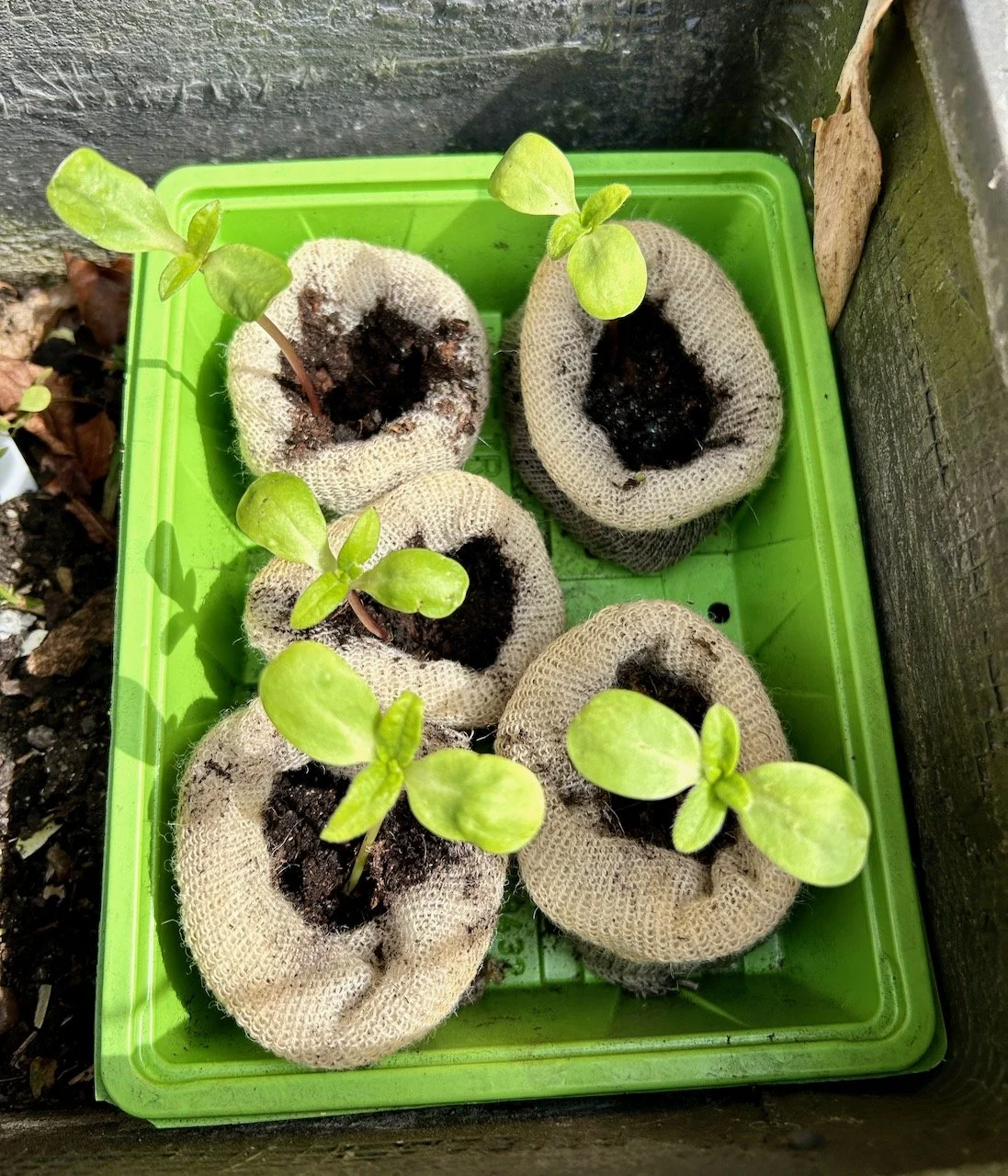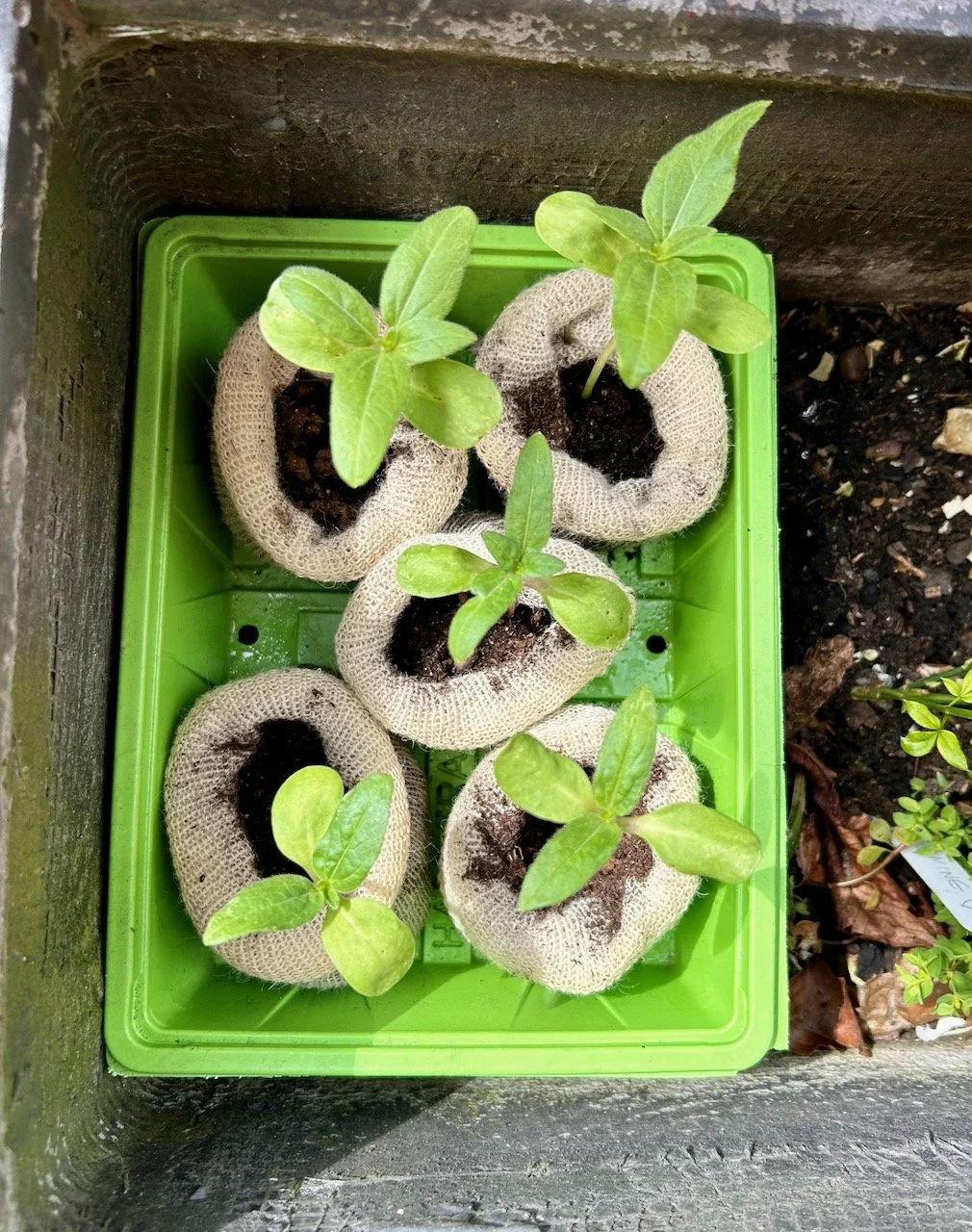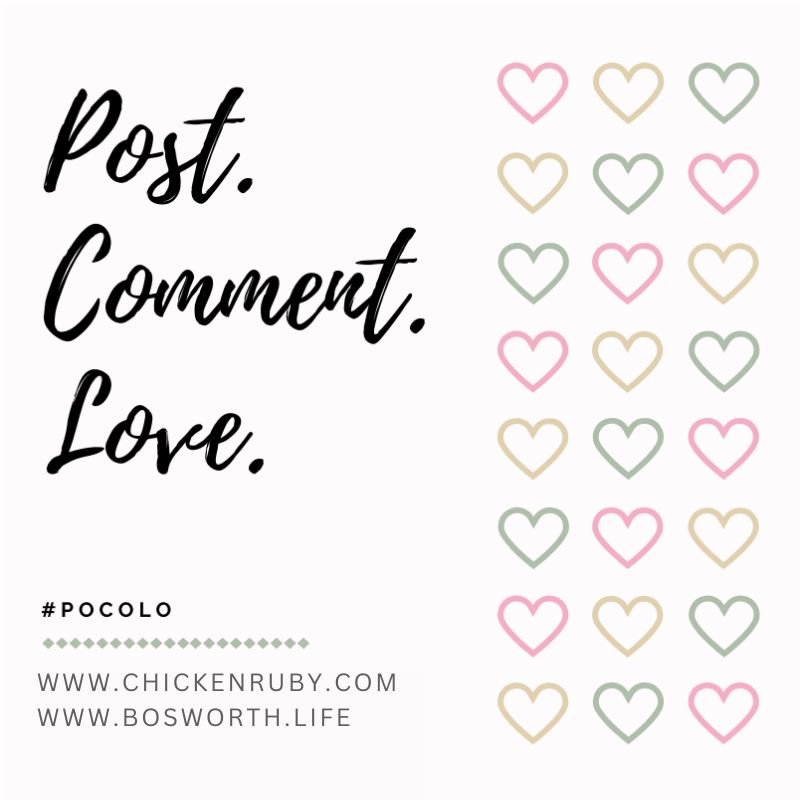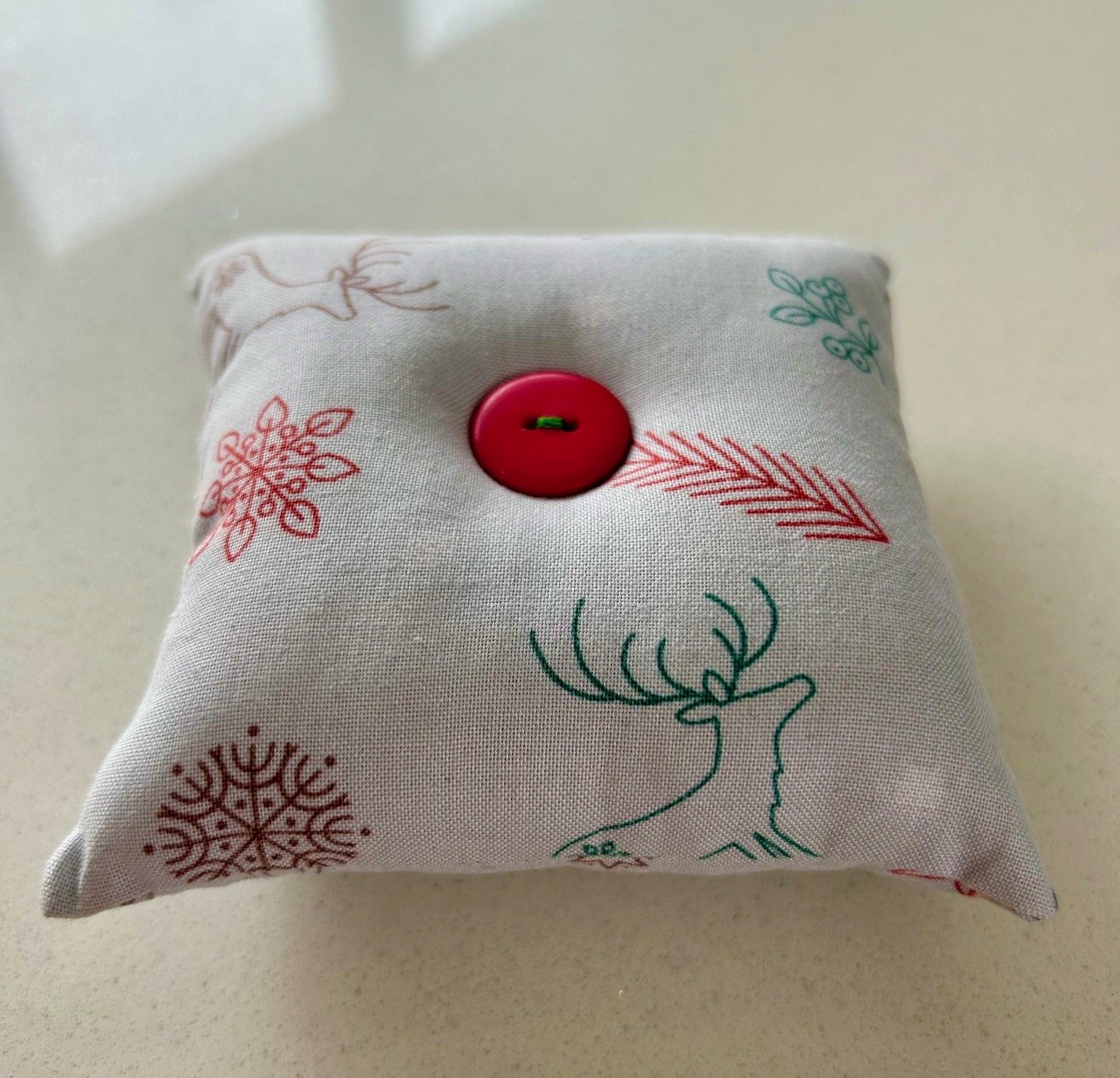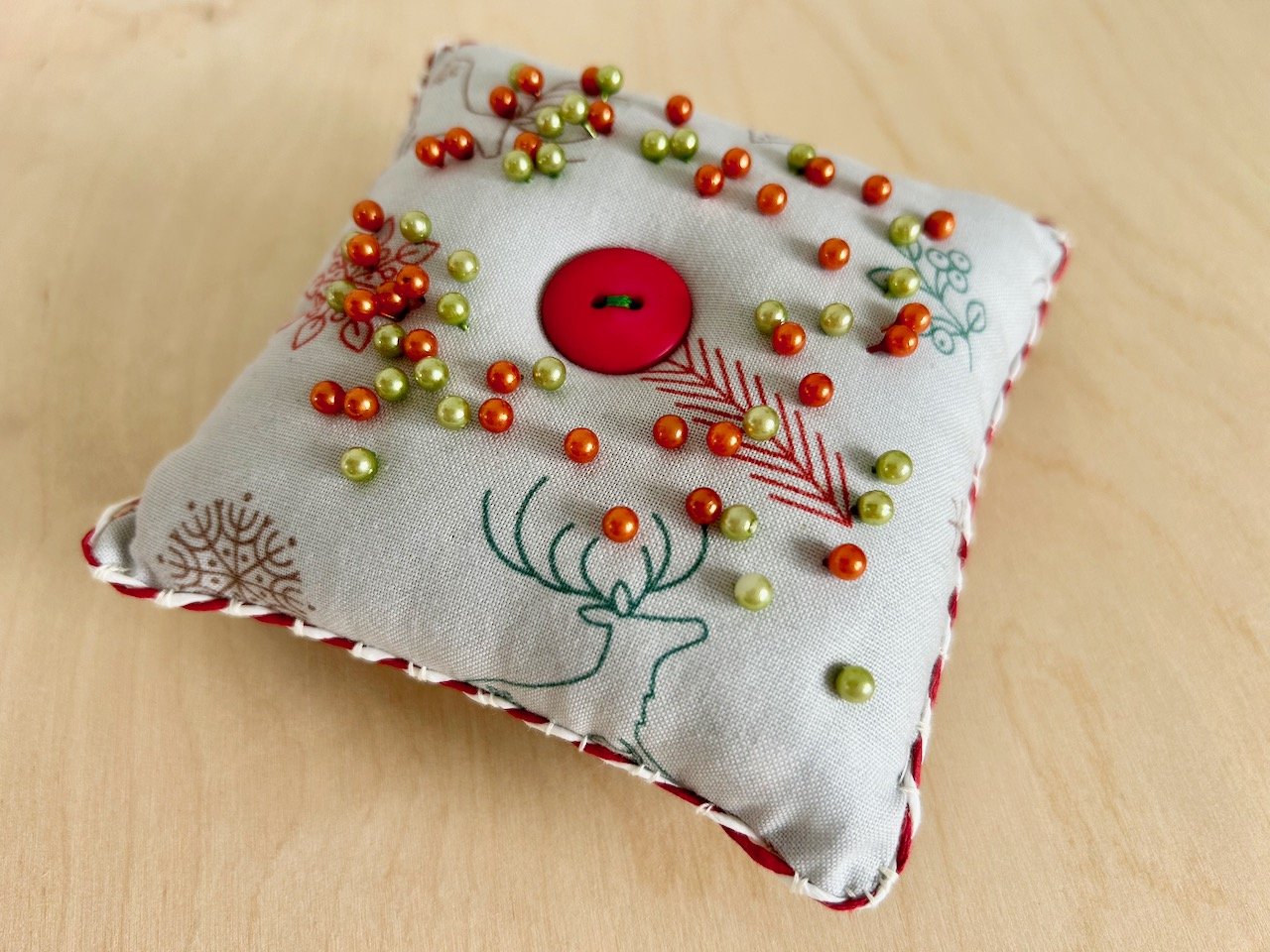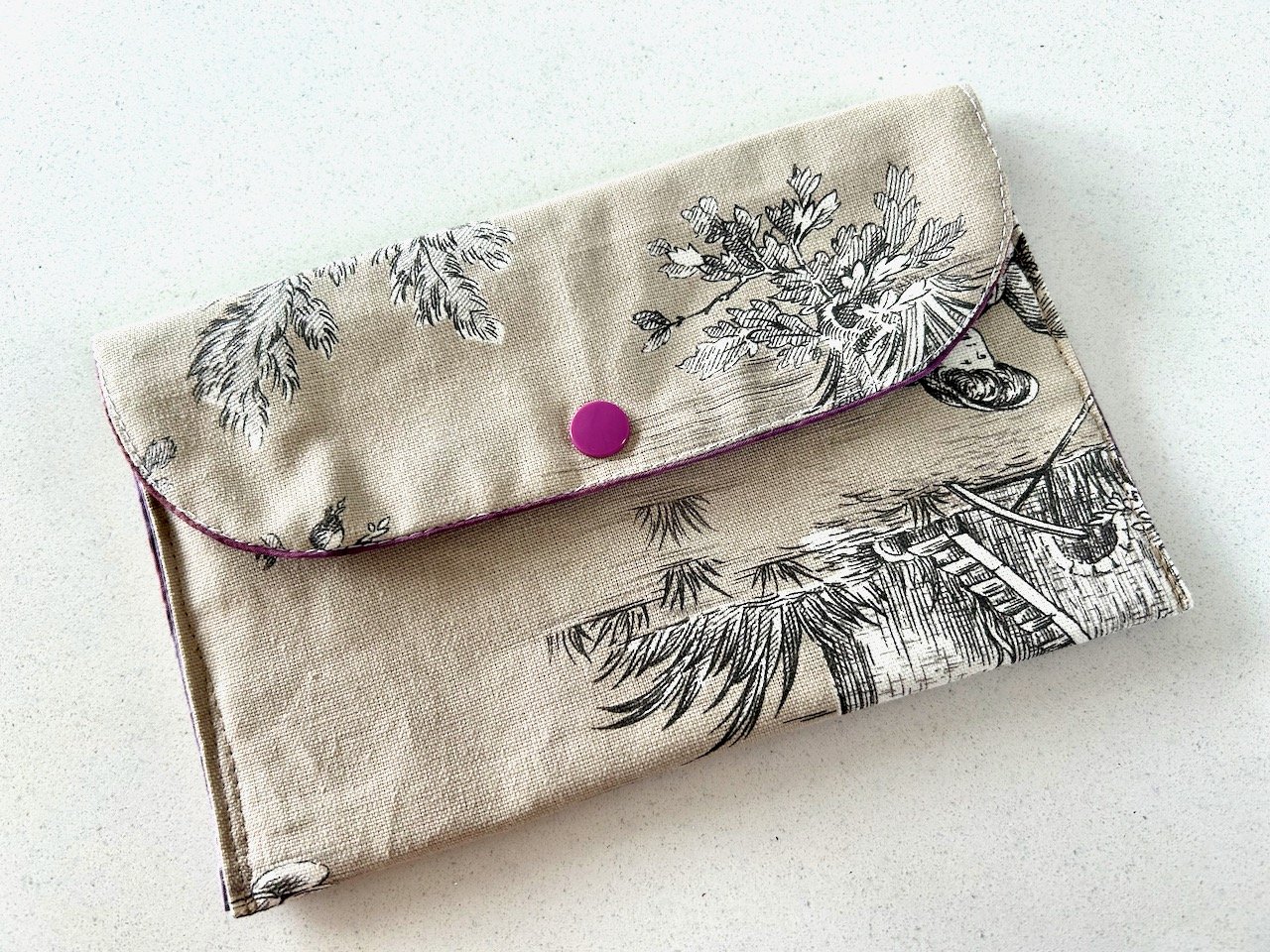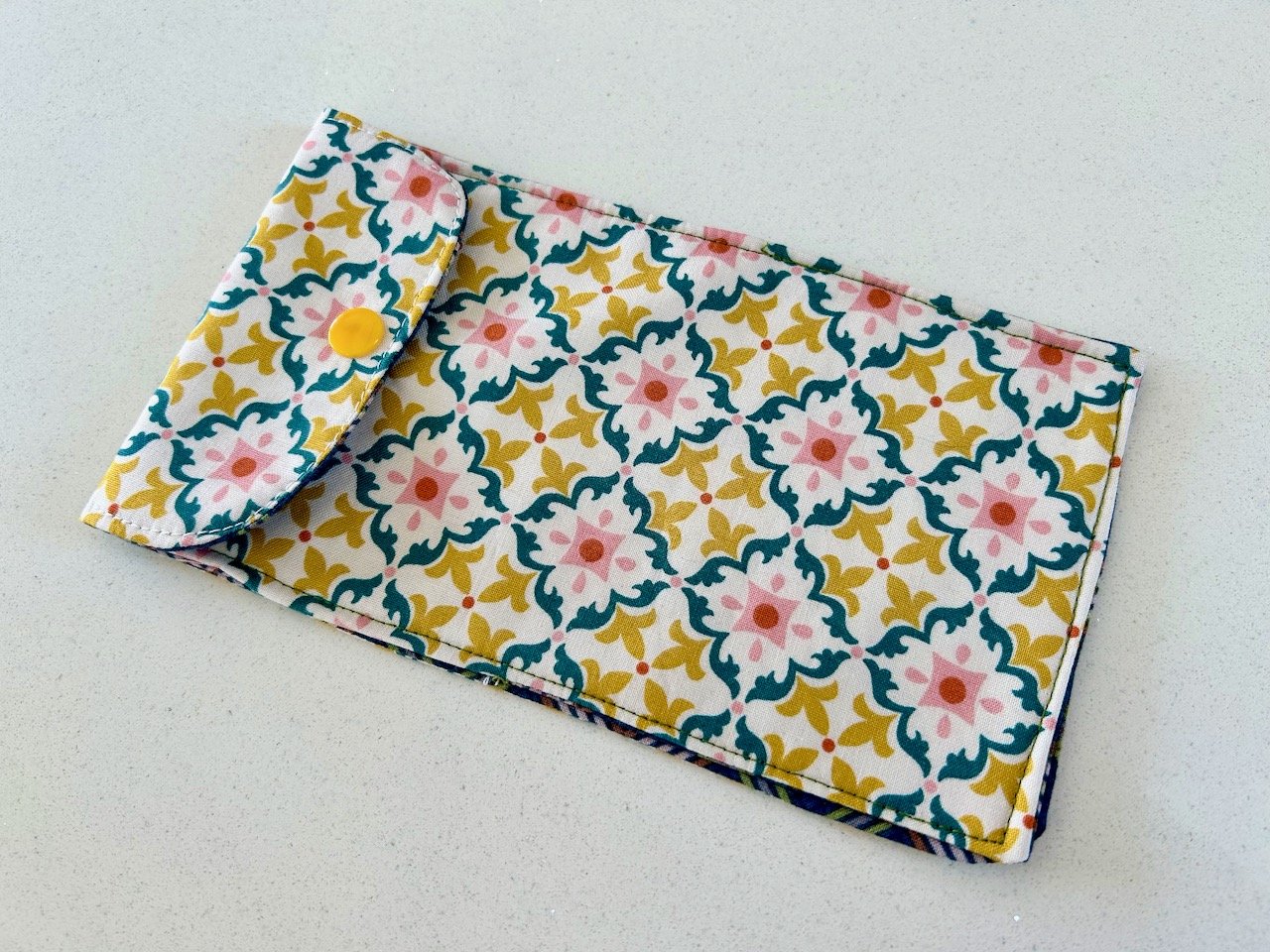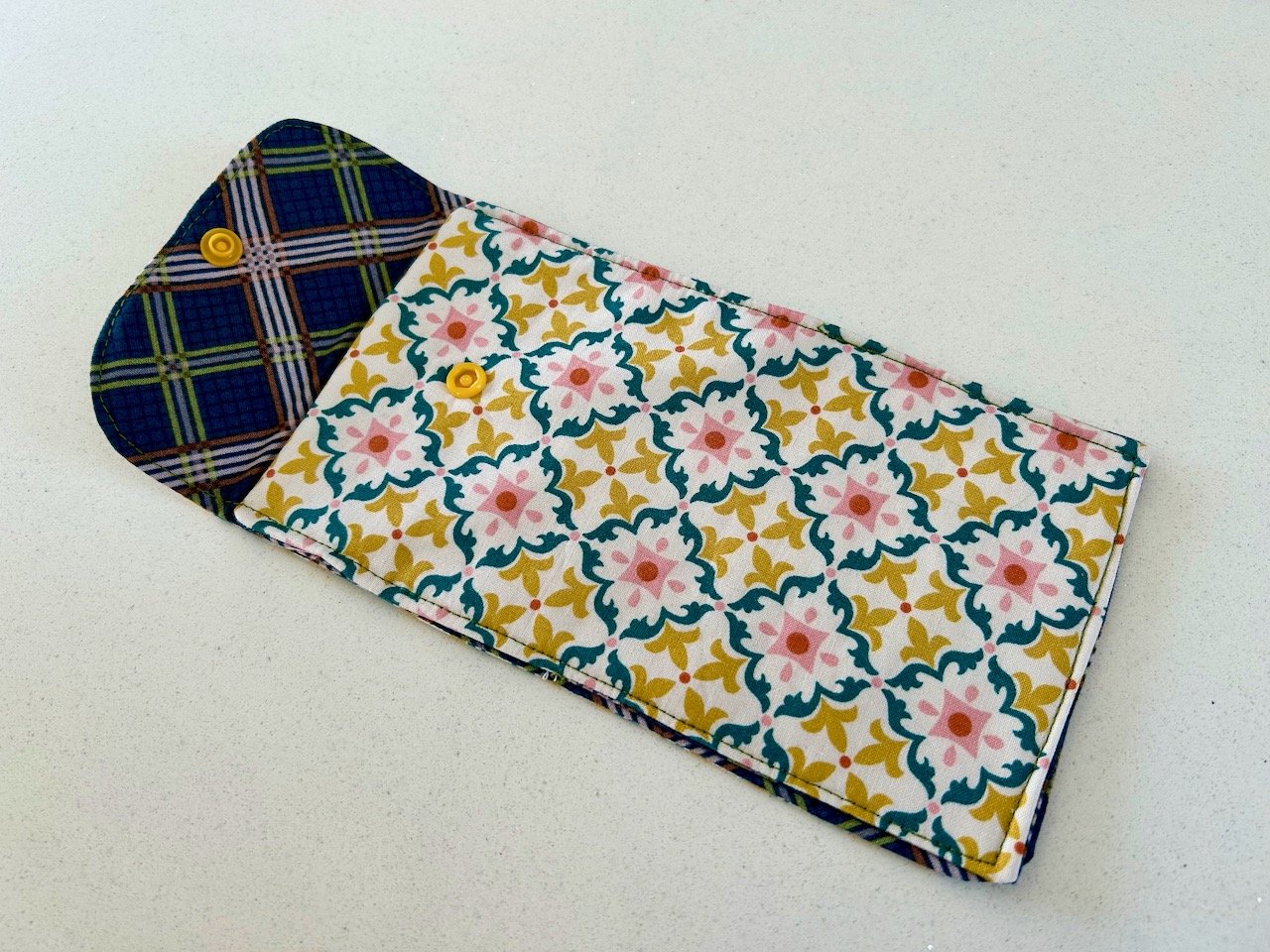If April was about the promise of new growth, then this month has been about nurturing that and seeing how far things have come. Unsurprisingly it’s our first May in this garden, and so I’ve been watching new things flower and have realised that we have three young mock oranges, rather than the single and very old one we had in our previous garden. I’m amazed at how many plants we had there, we have here - and without even trying, though of course they are much younger plants than those we had.
But anyway, let’s see what’s been going on in my garden in May.
The lupins we bought at the Newark Garden Show paired up with some bluebells from dad on the edge of the patio, replacing the tulips and before them the daffodils. I’m enjoying having a burst of colour here, though it’ll be interesting to see how and if I can keep this going throughout the summer, especially when the patio space is more in demand!
I’d intended to plant out the bluebells, which dad had planted into an old hanging basket for easy transportation, into our outer beds - but what with life and the weather I hadn’t gotten around to it, and so they flowered where they were planted. As a stroke of genius I realised the hanging basket could perch on the top of the pot, and in fact that worked so well I’m now wondering if this could be a more permanent arrangement. We’ll see.
Elsewhere in the garden there were more signs of life, with an early ceanothus flower just visible if you looked hard enough - though the hellebores were also still in flower - isn’t it great when the seasonal blooms mix and merge like this?
Whilst weeding the gravel - it is an never ending job - I found a larger than the weeds but still small lavender plant, and while we have five or six lavender bushes, I never sniff at free plants so was quick to pot this one up to see if it would survive - and it has so far. The gravel has been a great place for seedlings as along with the weeds I’ve also found many, many small buddleias, some lady’s mantle and towards the end of the month we’ve also had some flowering red poppies.
One of the lupins surprised me by producing a double headed flower, which looks more like bunny ears than a lupin. It’s since flowered and was thankfully the only one that split this way - with more normal looking flowers greeting us when we got back from our trip to Italy. I’d moved them into a more shaded part of the garden before we went and this helped them cope unaided I think.
Just before we went away MOH spotted some small furry fruits on the nectarine tree which I planned to grow against the old brick farm wall - I was grateful that my longer term plan looked as if it would come to fruition (sorry!), though not really sure if they would last for long. And while there were fewer when we returned, there were still definitely some on the plant, and they were larger, so who knows, at some point this summer MOH and I may share a small nectarine, or two if we’re lucky.
It’s always a thing for me to check on the garden when we’re back after a holiday, and it’s no different in this garden. It’s interesting to see what’s grown and appeared in that time and often it’s more pronounced as you’ve been away. I did have a small smile when I spotted this pale yellow antirhinnum in flower - it clearly planted itself in one of the pots we brought with us, as did the taller toad flax (which if it hangs around with be a purple cone of flowers)
I’d brought the two potted peonies further into the border and away from their winter shelter spots and was pleased to see that each had a bud, just the one but that’s more than I thought I might get after disrupting them ahead of our house move. Whilst walking through the now overgrown shrubs I realised I was brushing past an in flower mock orange - I recognise that smell anywhere. When I looked more closely we have two further small bushes, so that was a really great discovery.
The rowan tree has filled out, and the local bird population has been feasting on some of the berries already; the buddleias has also shot up from my rather brutal prune earlier this month - it’s easily back to where it was before, and ready to flower. My discovery here when clearing some of the lower branches is that this was intentionally planted, rather than self seeded as I thought. I know this because on its main stem it has a paper label, and not many self seeded plants have those!
It’s growth is so vigorous though it was crowding out a smaller hebe, now it’s cut back again in part I’m hoping that there’s enough light and space for the smaller plant to come through.
The lettuces survived snuggled down in one of the trugs, as did the gravel lavender and lady’s mantle. One of the lettuces looks almost ready to eat, and the others could probably benefit from a slightly larger pot - so that’s something to add to my to do list.
Another thing on that list, apart from regular checks on the nectarines, is to sort out these herbs. I’ve finally realised where I can put them - and it’s in one of these trugs, so it wasn’t a huge departure from their temporary home - but my plan is to relocate the planter so it’s easy to access from the kitchen - more on that next month, hopefully.
The crab apples have also come on and small apples have formed where once there was blossom - this year I’m determined to use them, and not to leave them on the tree so long. I’m not sure yet whether I’ll use them in the kitchen or on a wreath, but use them I will.
And like any garden there’s still much to do, and much to learn - but I’ll leave you with a fully flowering ceanothus bush, whose flowers always remind me of those blue bobbly liquorice allsorts, though in all honesty, I much prefer the flowers! (Though just to be clear, I’m happy to eat most other liquorice allsorts).

